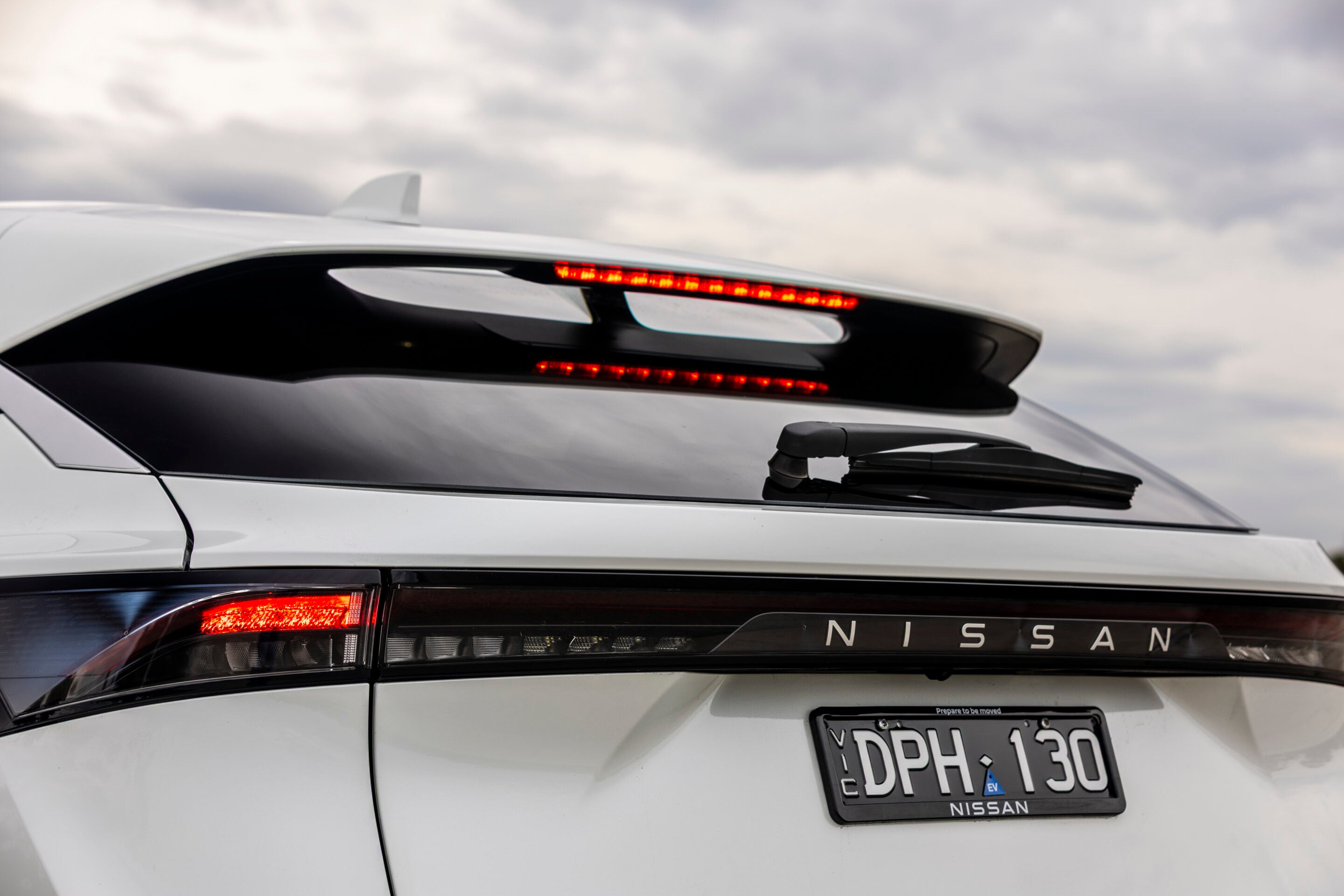MG faced a conundrum for Wheels Car of the Year this year. The judging team had asked for the IM5 to be delivered for consideration, with a crucial caveat: the judges wanted the entry-grade IM5 Premium, which would give the new electric sedan from MG a better shot at competing with the rest of the entrants. The Premium rings the till at $60,990 driveaway.
Unfortunately, the MG Australia team couldn’t get its hands on an IM5 Premium in time and asked that the IM5 Performance be considered instead. Price is a huge barrier for any brand to overcome, especially a brand new to the market in this country. MG has a foothold, but sub-brand IM is just starting out. As such, the IM5 Performance, which costs $80,990 drive away, was going to be hampered in a COTY field that was – on average at least – much more sharply priced.
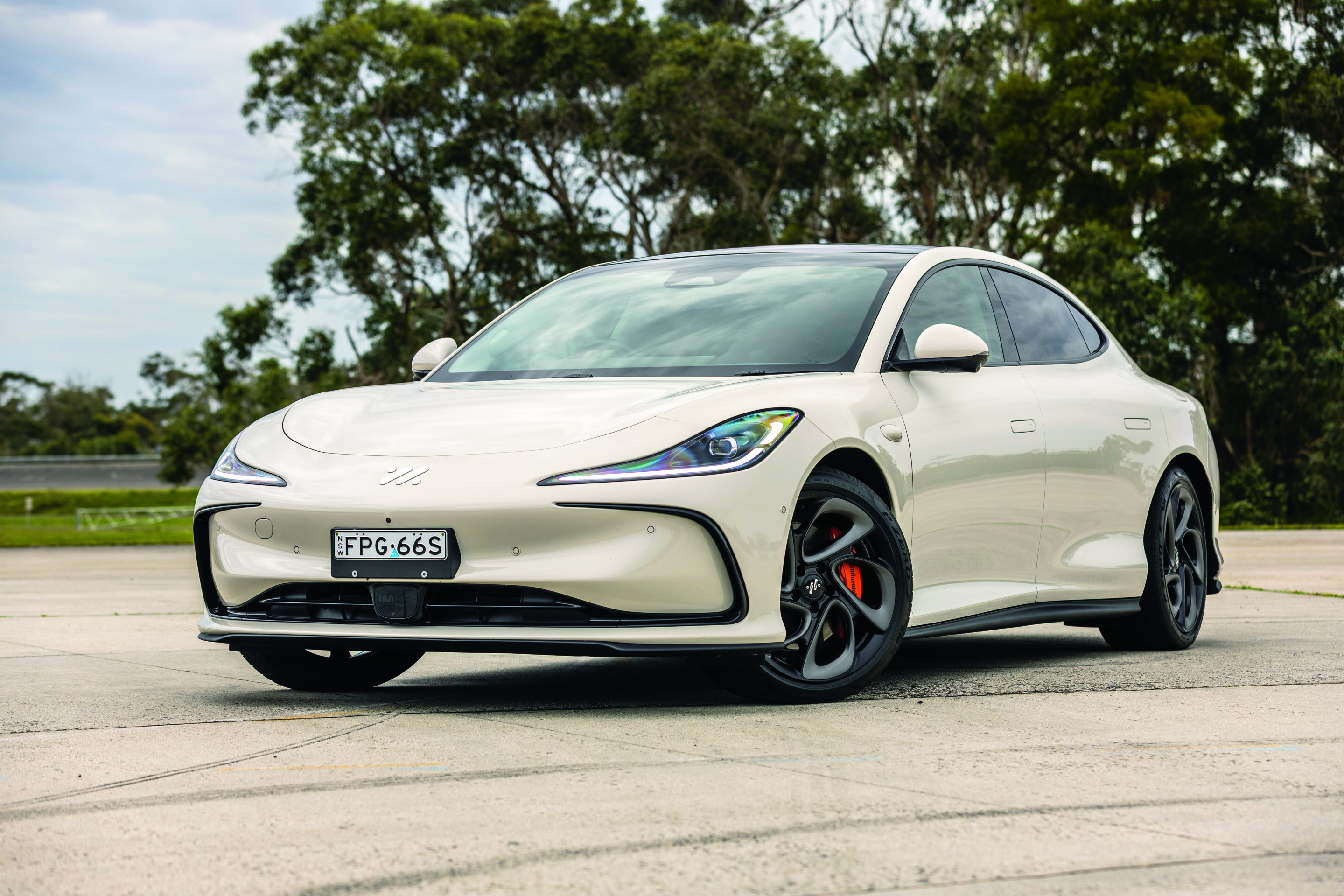
The Performance model to be assessed by the COTY judges, then, packs some serious, Tesla Model 3-rivalling heat. AWD via two electric motors, with a 0-100km/h claim of 3.2 seconds, and a claimed range of 575km. With 200kW and 320Nm available from the front motor, and a meaty 372kW and 500Nm from the rear motor, the IM5 Performance should be fast – and it was.
The IM’s styling is classy, the swoopy lines hiding some of the cabin space on offer and making it appear smaller than it is. You get a raft of standard equipment across the range, with a whopping 26.3-inch touchscreen dominating the middle of the cabin. It’s got beautiful, clear graphics, easy functionality and wireless smartphone connectivity as well. Interestingly, the judges noted the lack of DAB or AM radio as a negative, with only FM included in the system as standard. The tech tour de force continues with a second 10.5-inch screen for major control functions like AC, mirrors, seats, safety and driver assist systems.
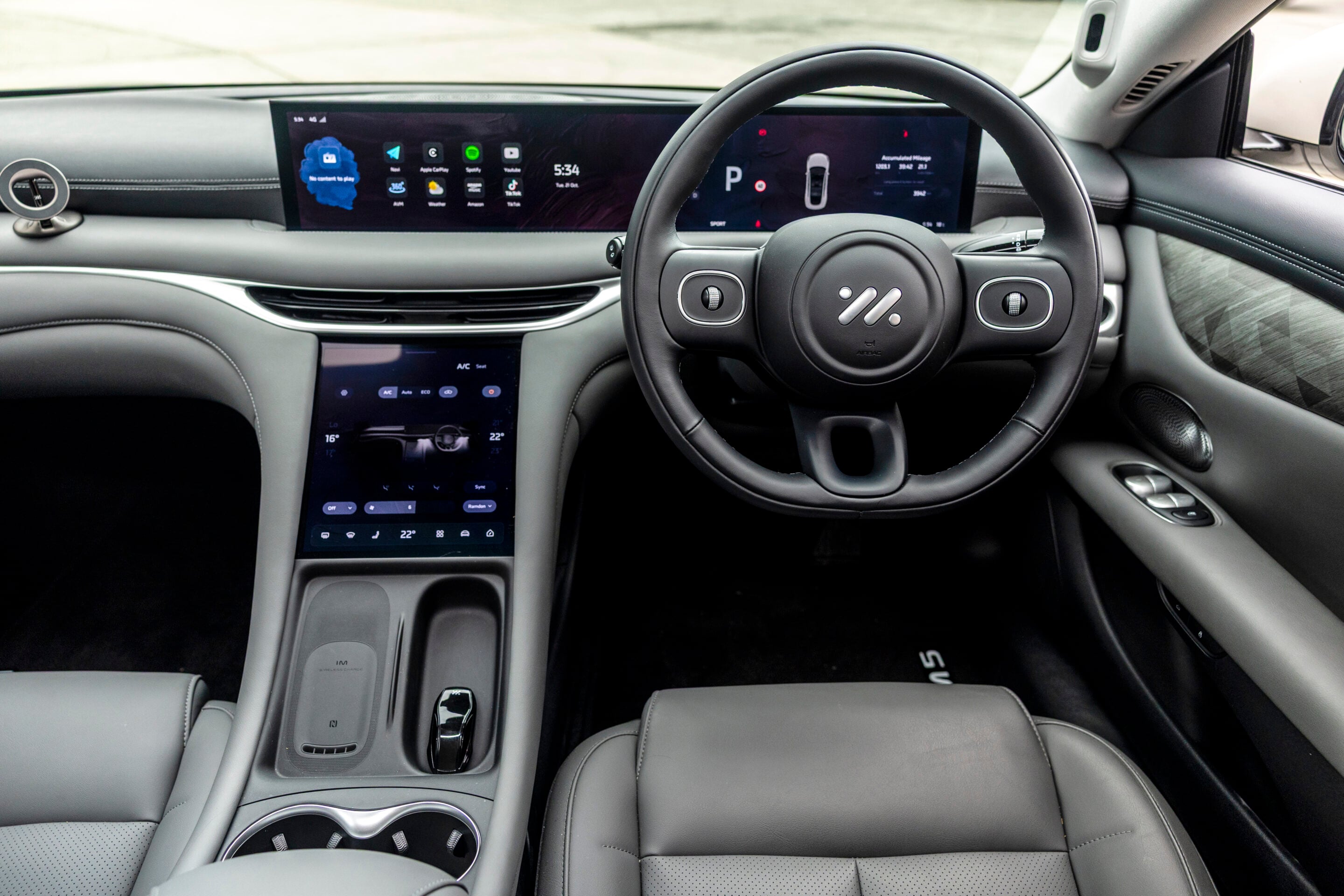
As an all-round driver, the IM5 Performance is a serious weapon – comfortable, capable and way faster than you’ll ever need. Check out Reindler’s verified 0-100km/h time (pg 49) if you don’t believe the MG claim. This is a fast sedan in the real world – faster even than it is on paper. Morley noted the ride being better than expected, while Robinson and Gover both remarked, “It’s fast, really fast”.
For the judges though, the issue centred around price. In a field where the average price is significantly below the ask of the IM5 Performance, the judges couldn’t look past it for a brand that is new to the market. If your budget stretches to the Performance, the judges are happy for you to consider it, given just how formidable it is.
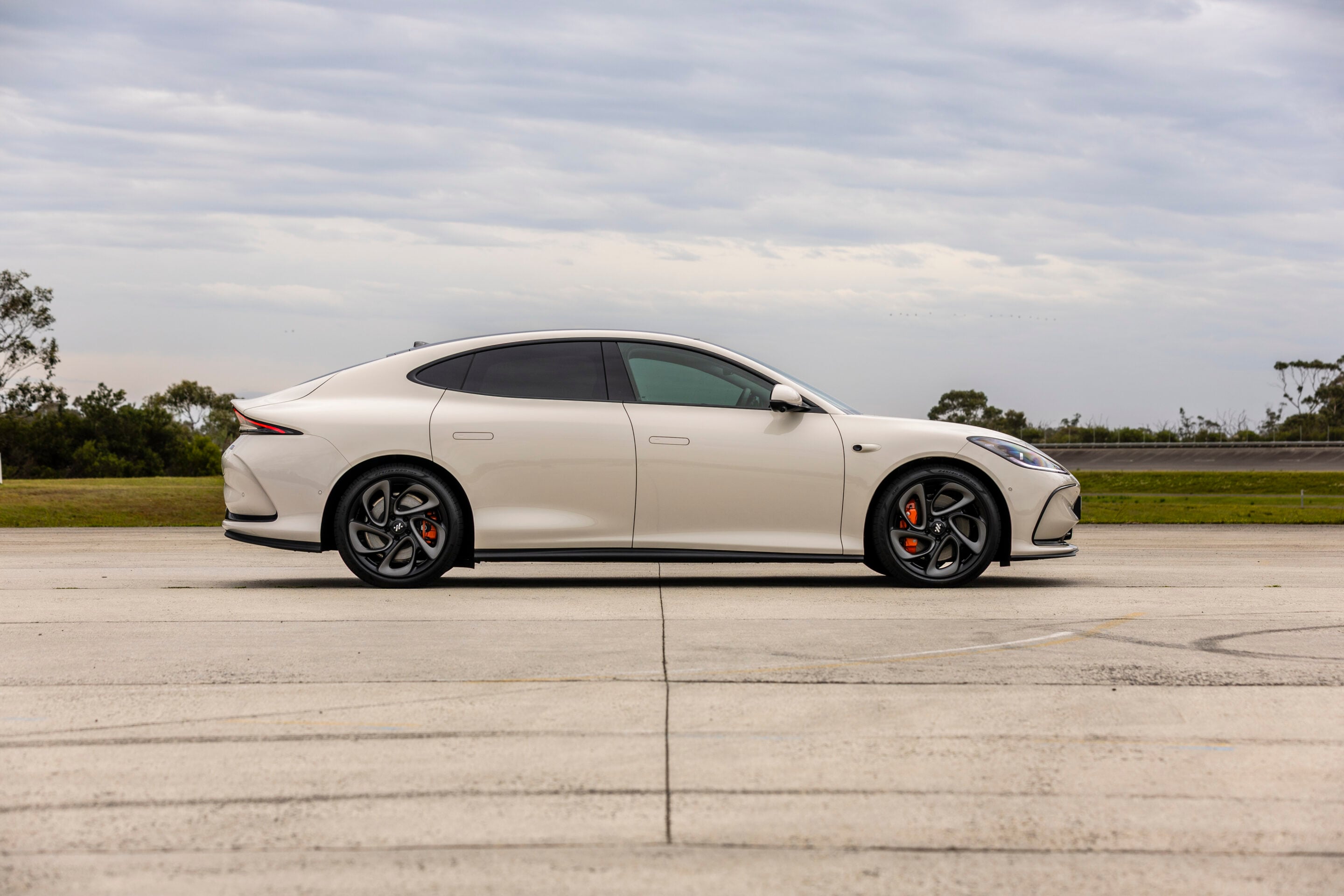
However, if MG had been able to provide the base model as requested, the IM5 would certainly have gone deeper into the COTY judging rounds. It’s fair to say that even in more affordable guise, it’s not an overall Wheels COTY winner, but it is an impressive and capable entrant from a brand looking to establish traction in the Australian new car market.
Specs
| Price | $80,990 (driveaway) |
|---|---|
| Body | Five-door, five-seat hatch |
| Drive | All-wheel drive |
| Drivetrain | Dual electric motors/100kWh lithium-ion phosphate battery |
| Power | 200kW (front) / 372kW (rear) |
| Torque | 302Nm (front) / 500Nm (rear) |
| Transmission | Single-speed reduction gear |
| Consumption | 17.5kWh/100km (est), 575km range WLTP |
| Kerb weight | 2298kg |
| 0-100km/h | 3.2 sec |
| L/W/H/W-B | 4931/1960/1474/2950mm |
| Boot space | 457L/1290L (18L front) |
| Warranty | 7yr/unlimited km (min), 10yr/250,000km (conditional) |
| Safety rating | Untested |
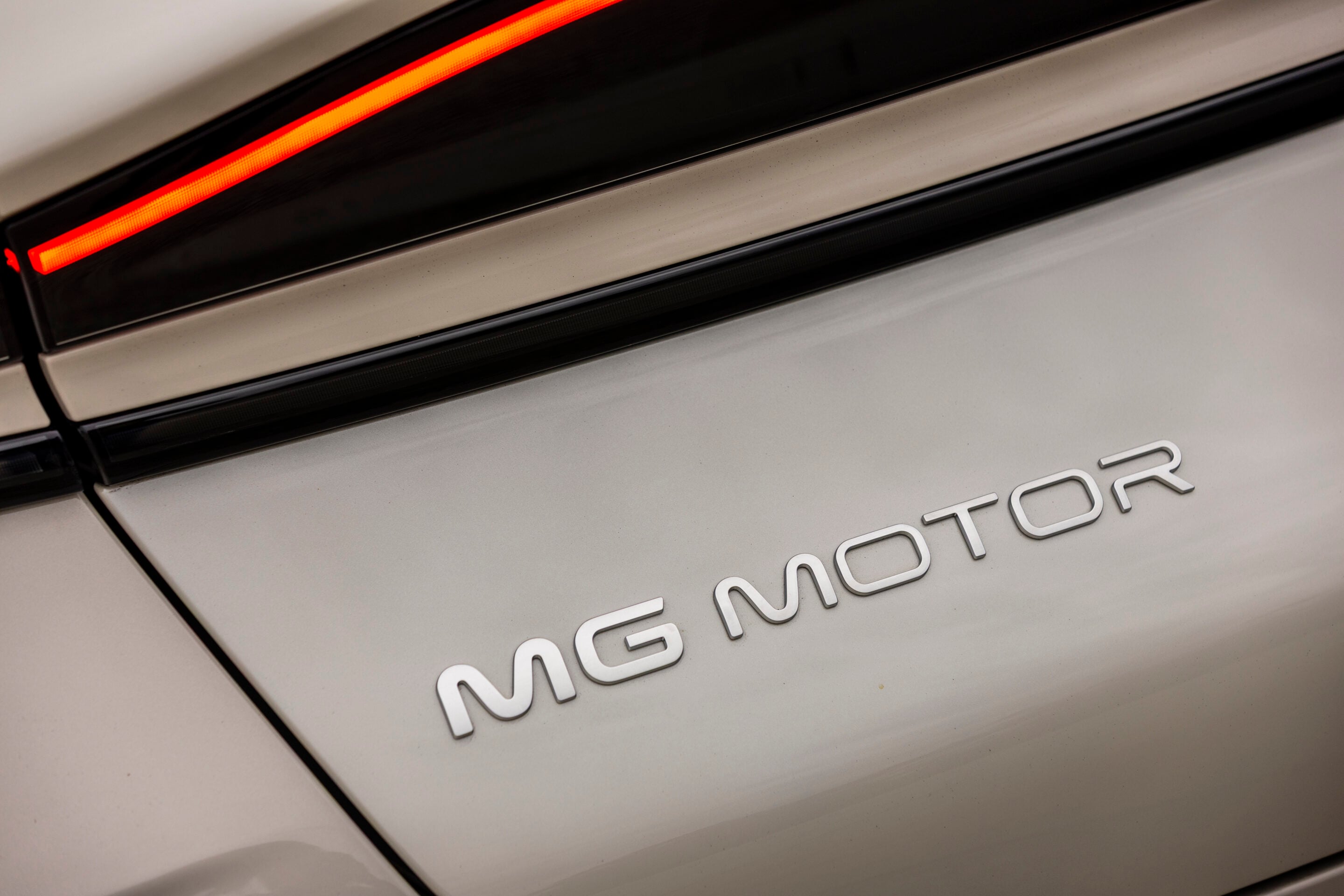
The Kia EV3 was expected to be one of the serious contenders for Car of the Year in 2025. After all, it had already been crowned as World Car of the Year in 2025…
The EV3 looks good, with Kia’s edgy signature styling meaning it doesn’t have to just rely on its adventurous light display on the nose of another anodyne EV.
Any way you look at it, it is a landmark car for Kia and the pivot point for the brand on its battery-electric journey. If the EV3 can fire properly – it’s doing around 250 sales a month but not remotely threatening to jump to Tesla numbers, as yet – then it will become the genuine entry point for the brand as more people plug in.
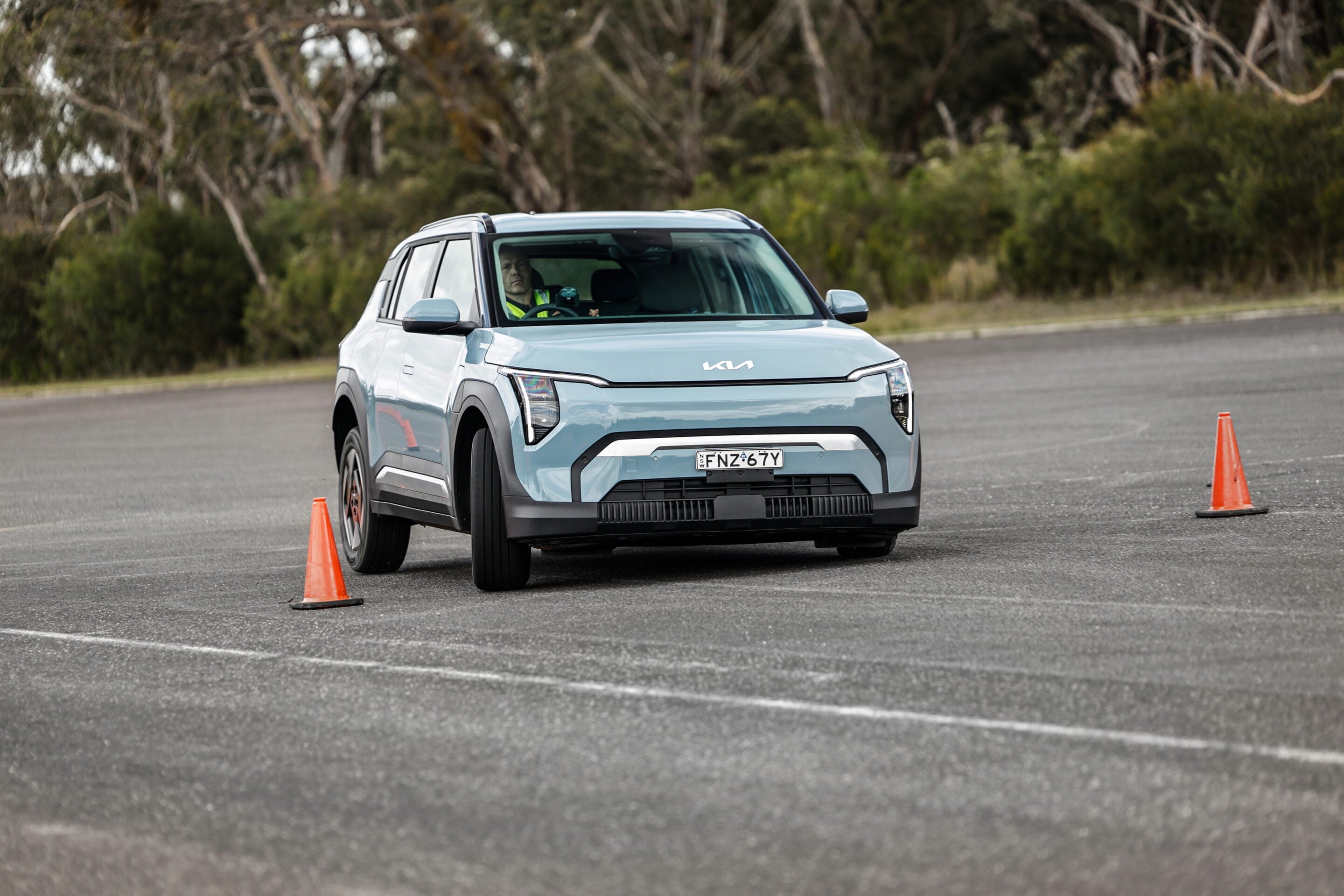
But that is a lot of ‘ifs’, with plenty of other hidden ‘buts’ and ‘maybes’… And, whether Kia fans like it or not, the EV3 didn’t even bounce to the front of the EV class in COTY ’25. The Tesla is more efficient, the Polestar is more polarising, and even the Hyundai Inster turns more heads. So, what to make of the EV3?
Kia began its electrification adventure with the EV6, and won Wheels COTY in 2022 thanks to the car’s impressive combination of efficiency, design and driving enjoyment. It was intended, from the get-go, to have a focus on the sporty side of driving – although it’s not as flat-out fun as the Hyundai IONIC 5 N which bagged its own COTY crown last year.
After the EV6 came the larger EV9 and the mid-sized EV5, aimed at Aussie families making the move to battery power with a mid-sized budget. But the latter arrived late Down Under, because the quality standards expected by Kia Australia were not achieved by the Chinese factory producing the EV5. There were plenty of complaints and noticeable changes, but it’s still not great.
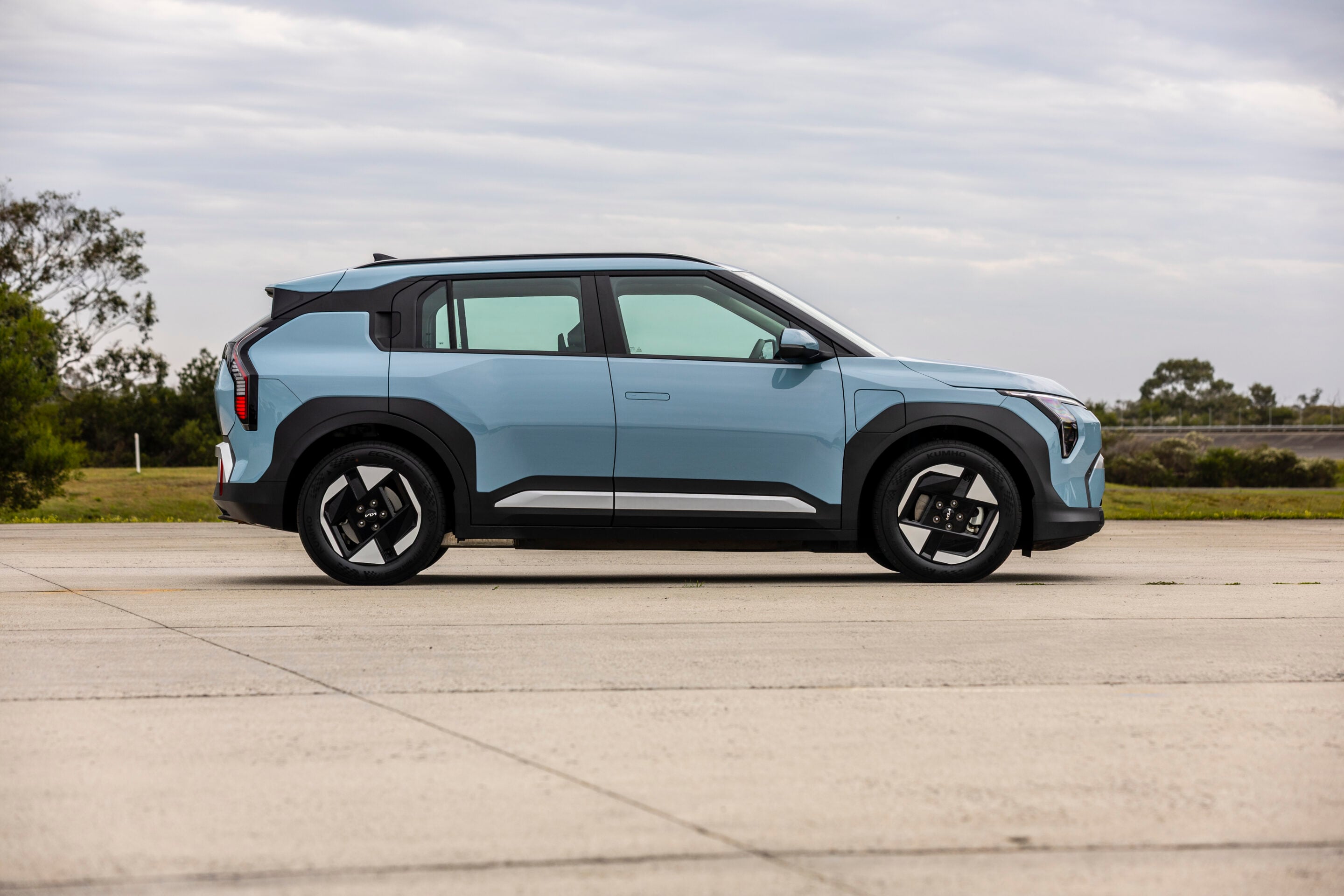
Dynamically, too, the EV5 was a let-down. Despite the best efforts of Aussie suspension guru Graeme Gambold, it is heavy and ponderous, and not nearly as enjoyable on the driving front as the EV6. Or plenty of other EV hopefuls…
Now it’s time for the EV3 and this year’s COTY contest. As background before heading into testing, it was understood the EV3 is a good car in the give-and-go of normal family motoring. It is quiet, nicely comfy, and has good range even with the basic battery and motor. At COTY, it was one of six full EV runners in this year’s judging, not as small or cheap as the Inster, or as big and costly as the IM5.
Still, it’s nicely priced and the size is good. A claimed range of 604km for the long-range battery pack also makes an impressive impact and shows where all EV contenders need to be headlining. There are three model grades – Air, Earth and GT-Line – with two battery sizes and a choice of front or all-wheel drive. None of that stuff is unusual in the EV world, where shoppers are often looking for the best package for their individual needs.
The starting price is good enough for Kia and Korea, at $47,600, but even the sub-$50k opener is not a serious threat to the Chinese brands who are making the big numbers in showrooms. It also costs $53,315 to jump up to the sweet spot in the range – the EV3 Air model with long-range package. Going all-in on the dual-motor and all-wheel drive GT-Line can take the price beyond $65,000. Which is a lot.
And that means it must compete with Tesla, never an easy job despite the downturn in support for Elon Musk’s cars through 2025.
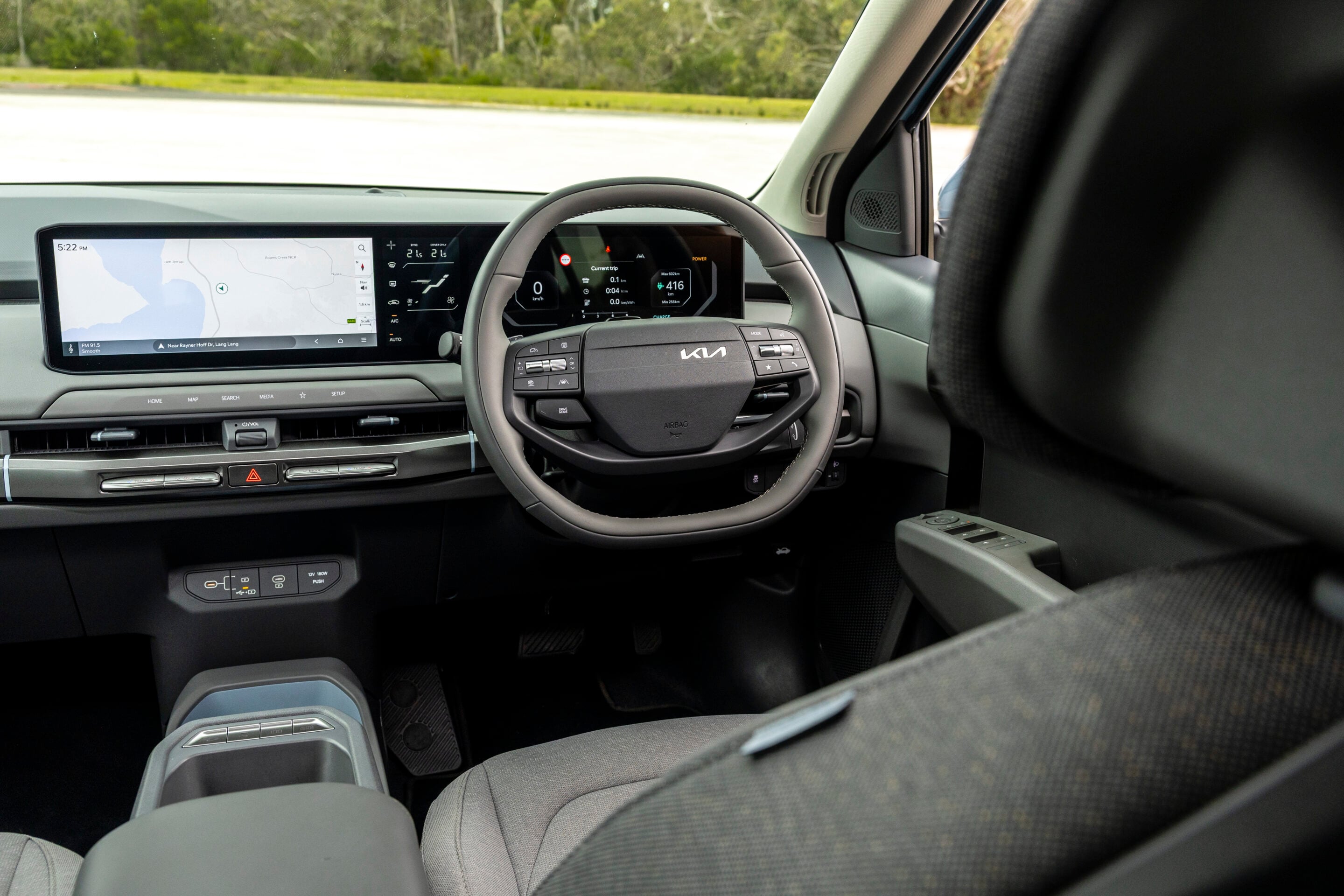
The mid-level Air Long Range is the car for COTY and the headline numbers are an impressive 604km of claimed range, 150kW/283Nm in the engine room, and an 81.4kWh lithium-ion battery.
Kia claims 7.4 seconds to run to 100, fair enough, but it also weighs in at 1930kg and that’s a lot to be moving around. It’s a 5-Star safety car and comes with a seven-year warranty, which also applies to the battery.
Taking a more considered look at the EV3, it does stand out in the long line of COTY SUVs because Kia’s latest design language is a definite attempt to present something different in an ocean of big boxes.
Inside, it’s clean and minimalistic – although not as plain as a Polestar or Tesla – with nice low lip to the windscreen that means good forward visibility. Kia has made great use of the space between the comfy front seats as, unlike the confusing ‘bench seat’ in the larger EV5, there is a giant storage bin.
The EV3 ticks all the usual boxes for USB charging and has a well-integrated dashboard display that blends two screens into a single display. Thankfully, not everything is hidden in a touch screen.
But the ADAS systems can be intrusive, which is a surprise after the work Kia has been putting into calibrating the driver-assistance package in other models. Some even have a one-touch ‘kill’ button for the really annoying stuff, but not in the EV3. It’s a nice place to sit, with cabin and boot space similar to the combustion Seltos in the Kia range, again, like just about every other EV in the class.
Dynamically, the EV3 is a disappointment at Lang Lang. It feels heavy from the get-go, with over-sporty suspension settings on a vehicle – without the GT-Line aspirations – which is aimed at daily commuting and family holidays.
It also takes encouragement, too much encouragement, to lean into corners and – despite sitting flat with its big battery – is not engaging or enjoyable. Push it to find the limit and it refuses to answer the steering with any enthusiasm.
Over Lang Lang’s lumps and bumps, it also judders and shimmies. They might be extreme conditions, but everything in testing is copied from the real world. And so, just like that, the EV3 is sidelined from its top three aspirations.
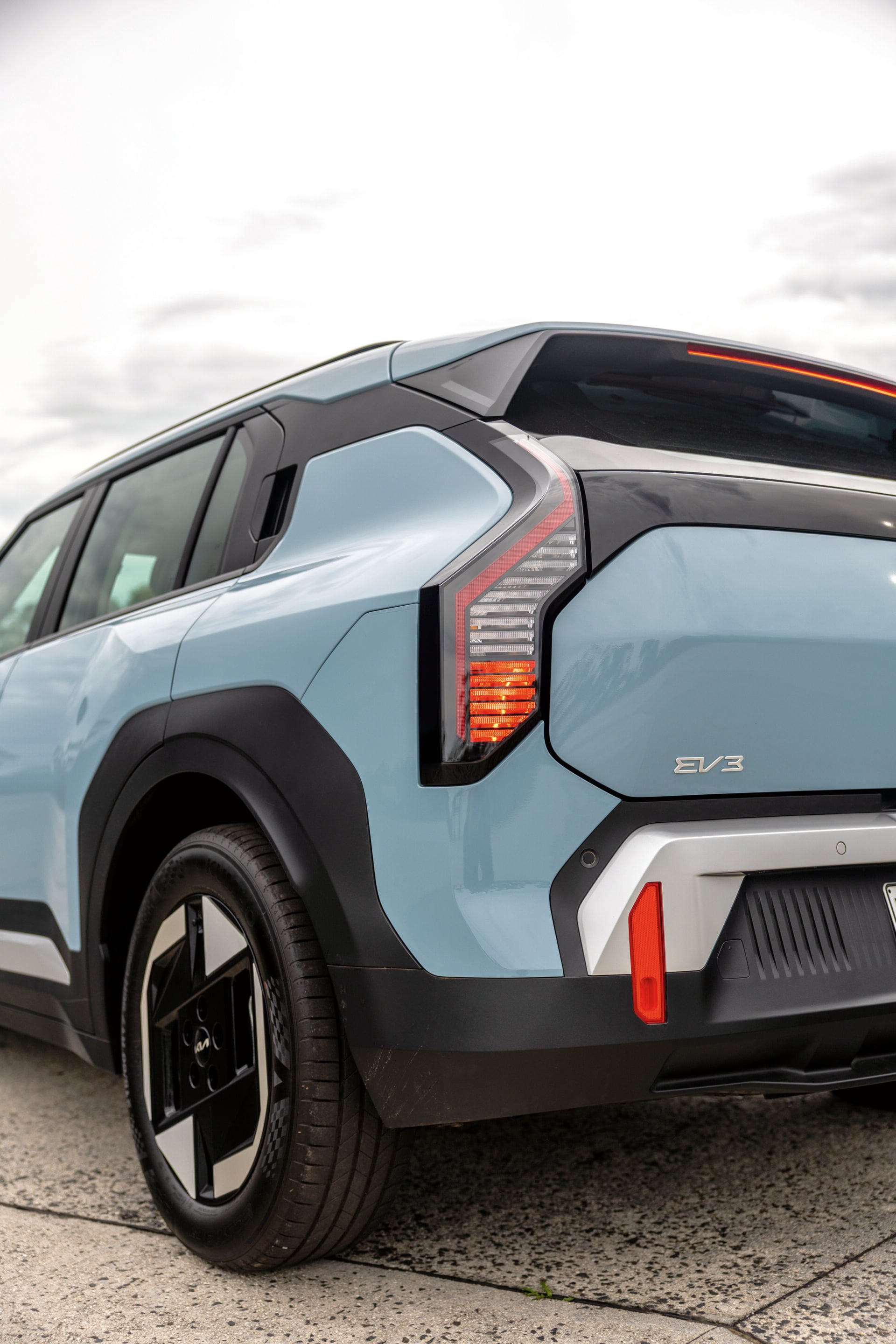
Specs
| Price | $53,315 (MSRP) |
|---|---|
| Body | Five-door, five-seat SUV |
| Drive | Front-wheel drive |
| Drivetrain | Single electric motor, 81.4kWh lithium-ion battery |
| Power | 150kW |
| Torque | 283Nm |
| Transmission | Single-speed reduction gear |
| Consumption | 14.9kWh/100km, 604km WLTP |
| Kerb weight | 1930kg |
| 0-100km/h | 7.7 sec |
| L/W/H/W-B | 4300/1850/1560/2680mm |
| Boot space | 460L (25L front) |
| Warranty | 7yr/unlimited km |
| Safety rating | 5 star ANCAP (2025) |
David Morley got the Mahindra in one.
“If you’re not looking for much, it’s got plenty,” he said after his first drive.
His one-liner on the Mahindra XUV3XO was a spot-on bullseye, priceless, and reflected the feelings of the whole judging panel. Everyone was surprised – in a good way – by the sweet little Mahindra. At considerably less than $30,000 on the road, it set the benchmark for affordable value in 2025.
It also became the first Indian car to make it into a COTY contest. In the past there was no indication
a Mahindra would ever bother the scorers, despite the good intentions and plans to eventually become much more than just the homegrown Holden-style hero of India. And it was not disgraced.
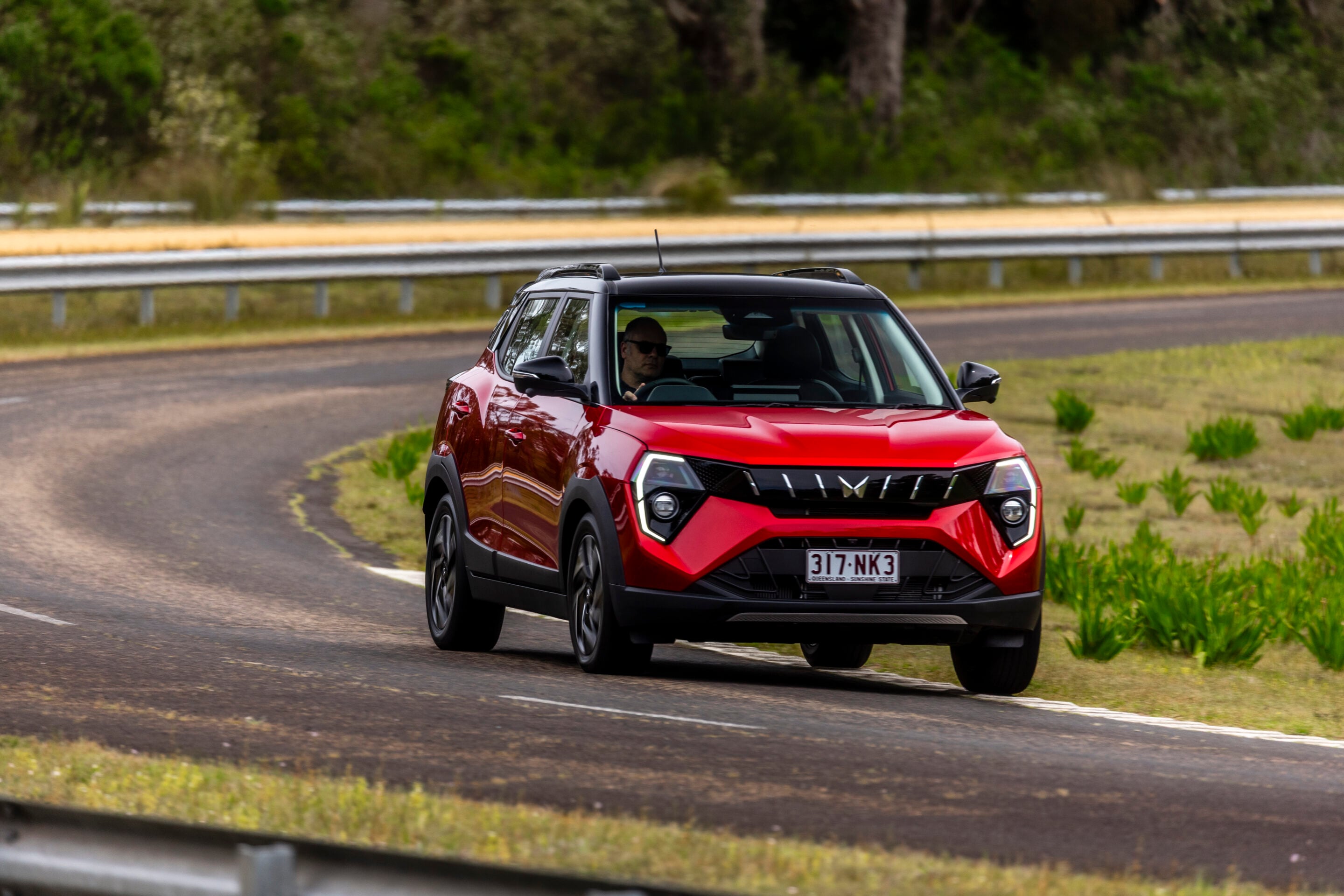
The Mahindra survived the early culling and was even chosen ahead of the Alfa Romeo Junior for its driving enjoyment on the ride-and-handling course at Lang Lang. That was a surprise. It might not have 5-Star ANCAP safety, or the brand power of Toyota, but it’s a family contender which deserves to get more attention in Australia. Compared with something like the Suzuki Fronx, which also arrived in 2025, the Mahindra is a winner.
“It’s relatively easy to build an expensive luxury car, but much harder to make something to a price,” said Morley, talking generally, but highlighting the package from Mahindra.
The 3XO comes as Mahindra makes a much bigger push with its SUV line-up, lifting the bar at its development base near Chennai on everything from design and engineering to quality. After all, the company cannot trade forever on its place as the world’s largest tractor maker…
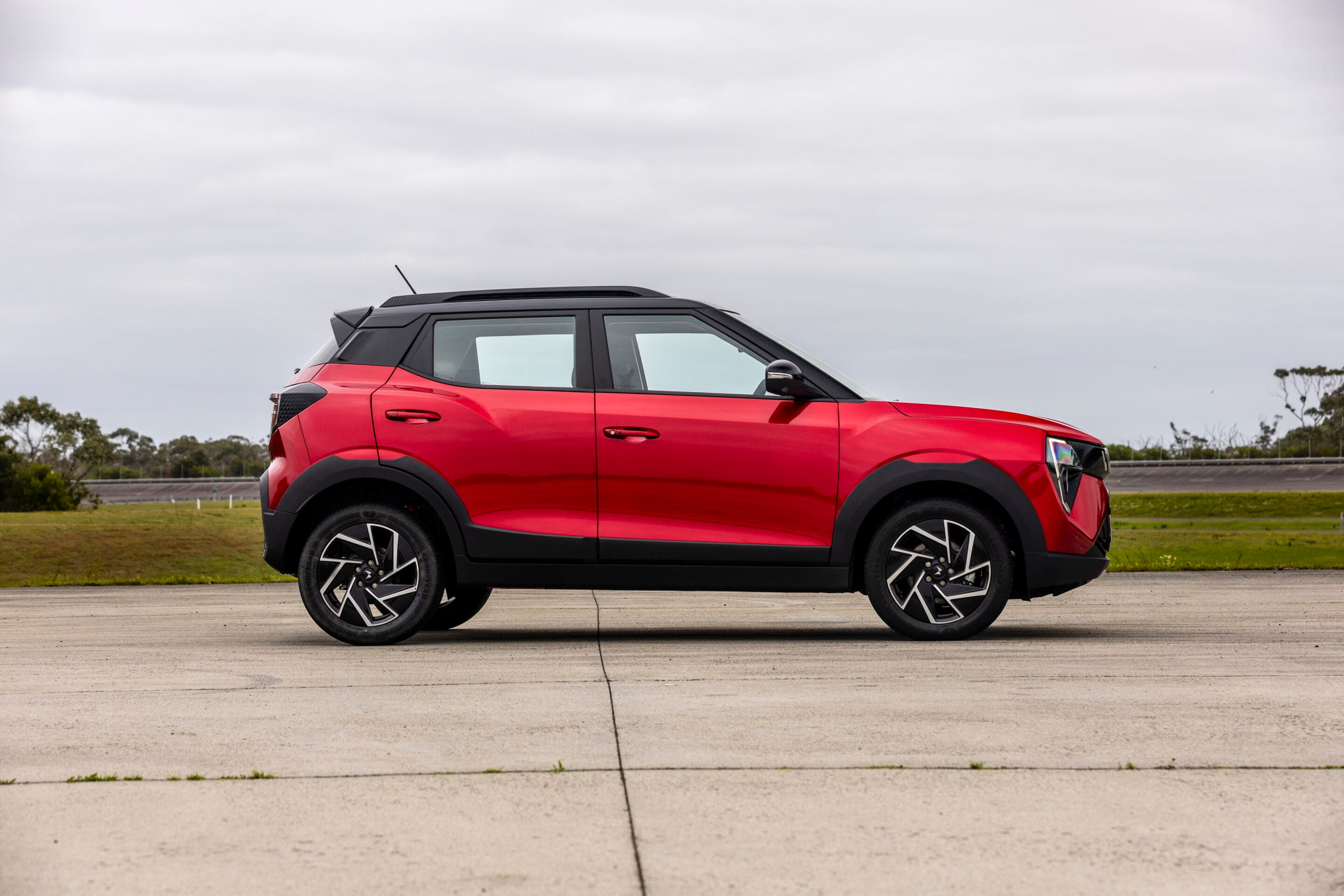
It has invested more than $90 million in its giant technical centre, which includes everything from engine and crash-test laboratories to a smooth new test track. There is no plan to push for 5-Star ANCAP, not because Mahindra is anti-safety but because the Advanced Driver Assistance Systems needed for compliance are totally unworkable in the chaos of Indian traffic. Then there is the extra $5000-ish it would add to showroom stickers in Australia.
Which triggered another non-specific COTY discussion about the requirement for a 5-Star rating to become a COTY winner. Would buyers be happy with a 4-Star or even a 3-Star rating if they knew a vehicle would give proper protection to its occupants?
But that’s off-topic, because the 3XO is not good enough for a COTY crown and it’s unlikely it will become a benchmark brand in Australia any time soon despite the company’s export ambitions.
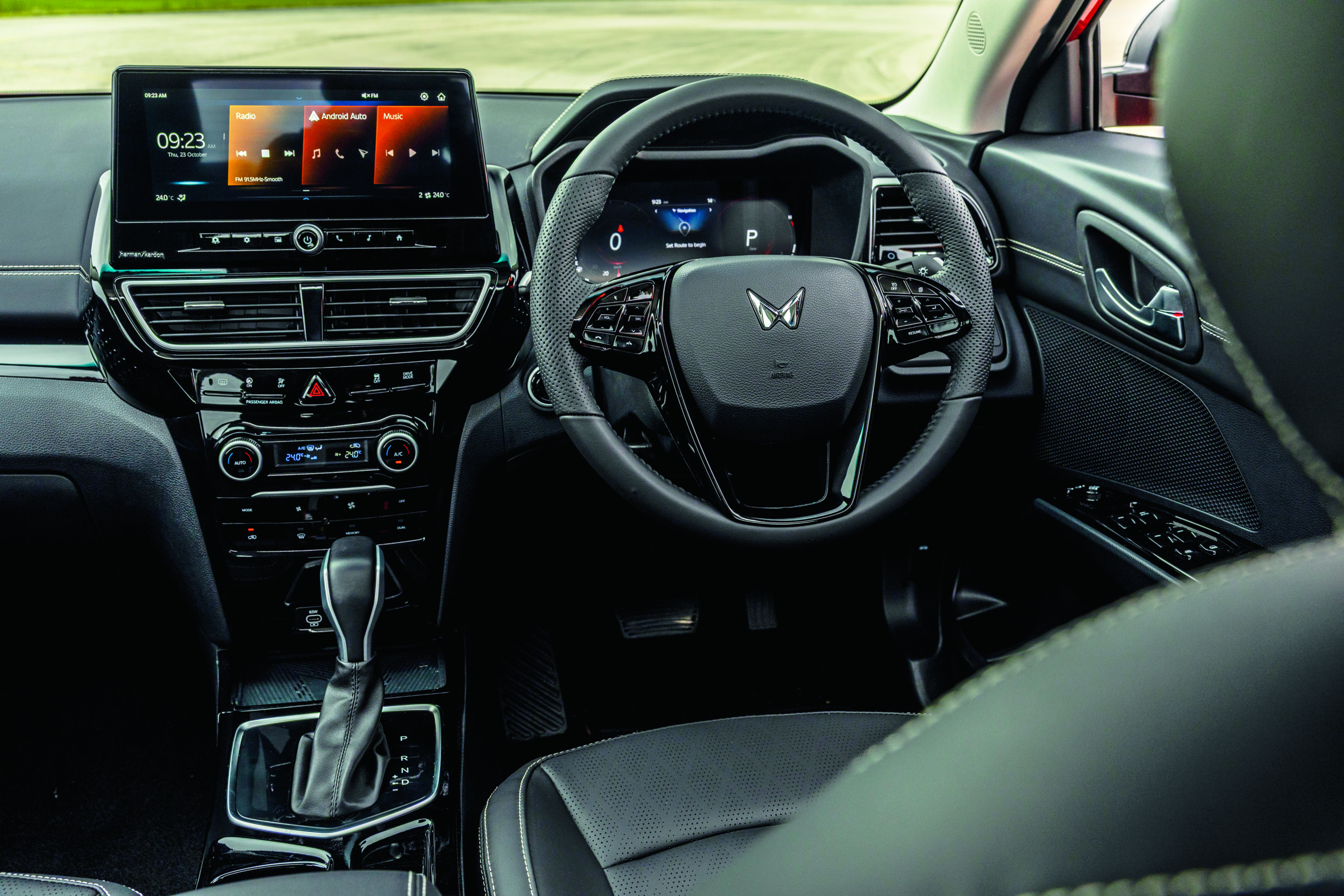
Australia is an obvious target, since Mahindra has been operating Down Under for more than 20 years, and its cumulative sales – although it does not report through the official VFacts channel – are ripe for improvement over the current figure of less than 5000 a year.
The new 3XO is the second of its XUV line-up, following the larger 7XO which showed some promise but was never going to be a star. The 3XO, in contrast, is a road-up development job intended to flatter owners and get shoppers in Australia to add it to their list.
The starting price of $26,990, including on-road costs, is enough to get people thinking during their new-car research. It also has a seven-year warranty good for 150,000 kilometres. But it’s the car itself which pushes the point.
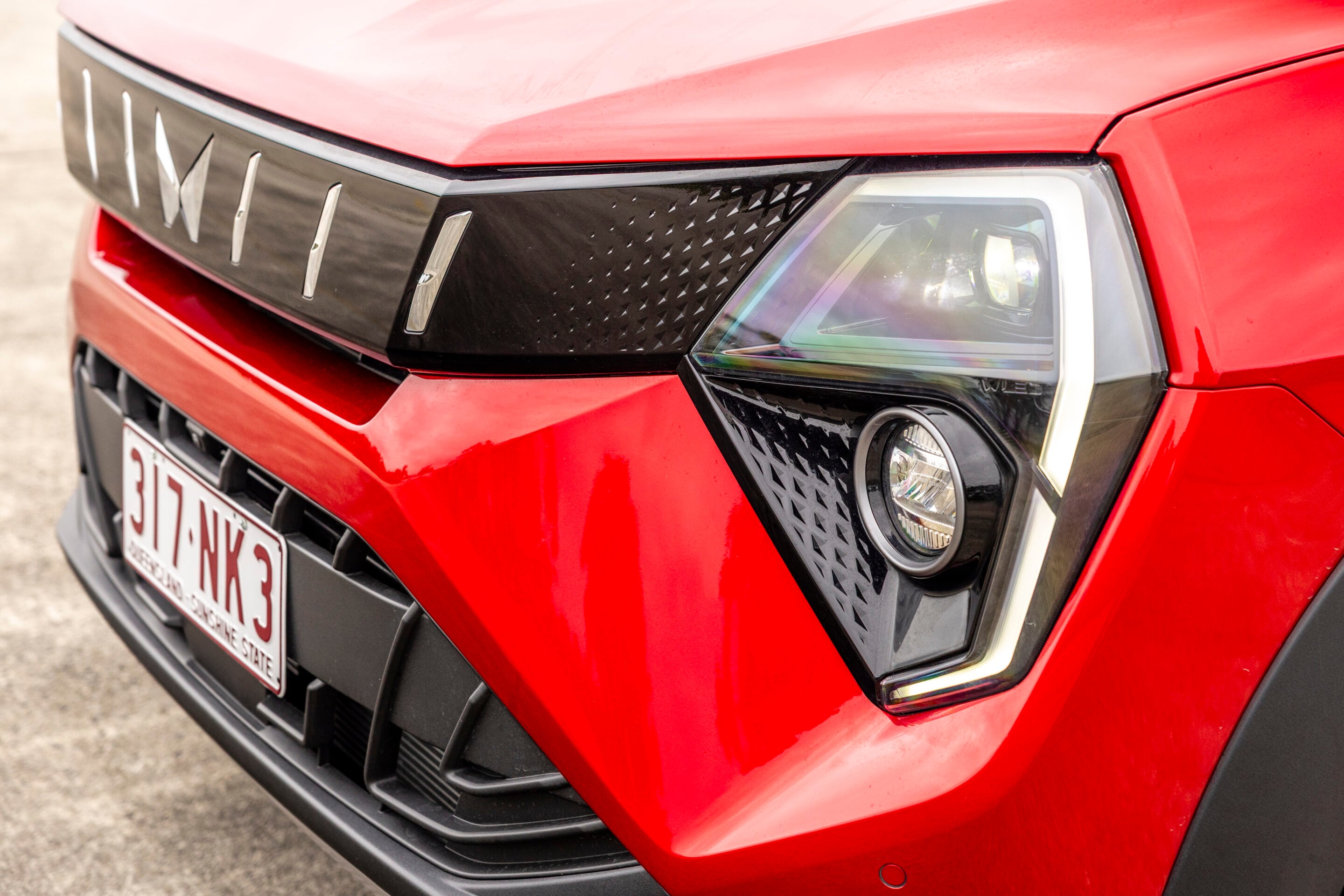
It’s in the right range for size and price to tempt young families. It’s also well equipped and – no surprise considering the weather in India – has excellent air-conditioning. Mahindra claims a cabin for five, although it’s really only good for four Aussie adults, and the luggage space is also nothing special in the class.
The dashboard and cabin has a clean-and-clear layout, and the materials and finishing are fine for the price. The instruments are big and clear, the infotainment screen is nicely sized, and it’s good to have old-school buttons and knobs in a world turning to touch screens.
The front seats need more shaping and support, and it’s the same in the back. But the AX7L version at COTY (perhaps Mahindra needs some help with naming its cars and grades) has a punchy seven-speaker sound system from Harman Kardon. The smartphone mirroring is good, although some shoppers will miss factory Satnav even though most are now easily trumped by App-based alternatives.
Also on the downside, the 1.2-litre three-cylinder engine is hardly a fireball. It only makes 82kW on regular unleaded, and needs more than 200Nm of torque despite a six-speed automatic connected to the front wheels.
The economy claim is 6.5 litres/100km, but that could probably be bettered with a light foot on a country run. As for a 0-100km/h claim, Mahindra makes none (Karl Reindler’s test put it at 12 seconds).
Rolling into action at Lang Lang, the Mahindra is dozy. You need to work the shift lever to get more than middling response from the engine room.
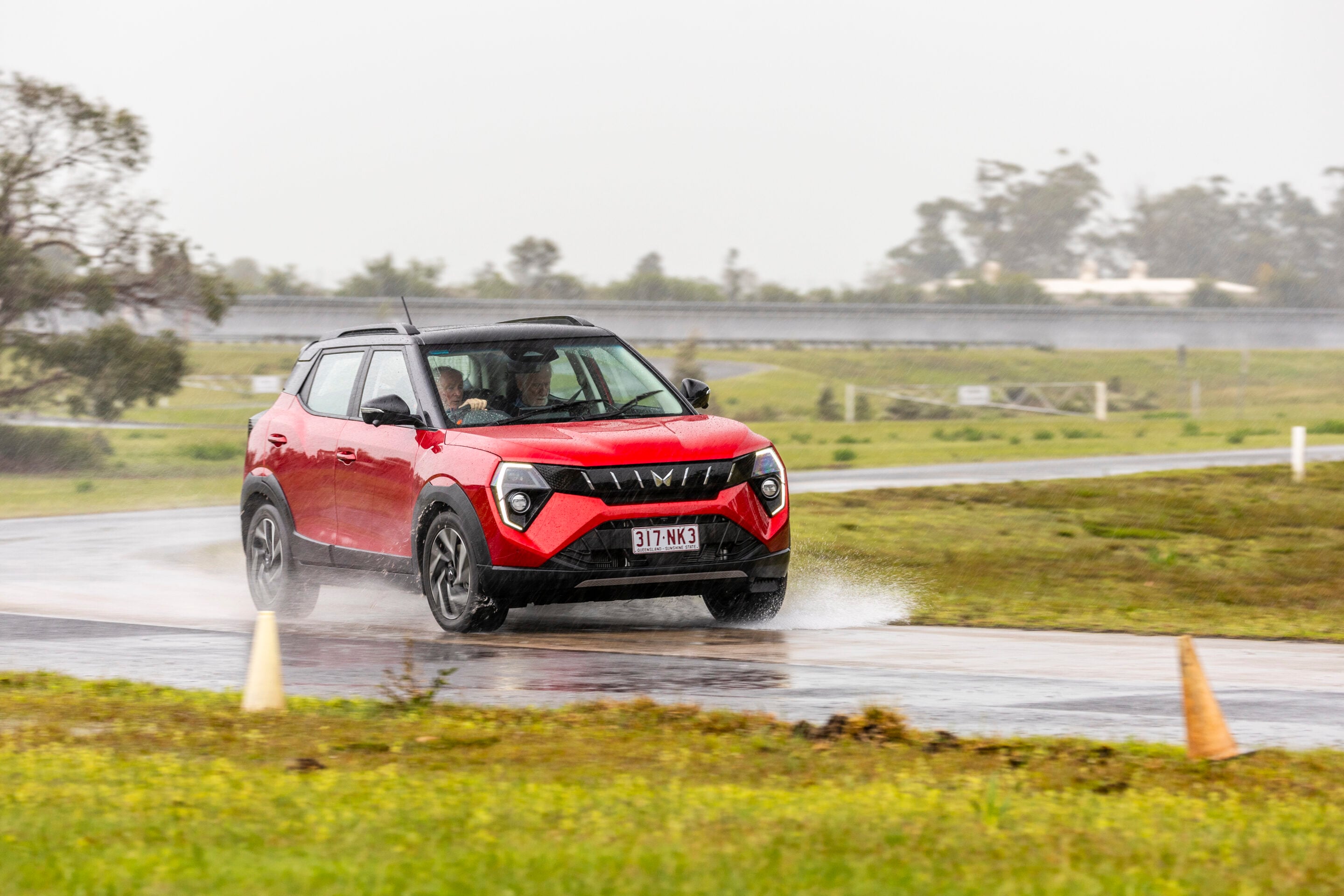
But the suspension is a surprise and delight. It copes easily with lumps and bumps, turns enthusiastically into corners, and never feels nervous or unsettled in braking. It’s proof that Indian roads are much like Australia.
The 3XO sits lightly on the road, is nicely quiet up to highway speeds, and makes no excessive demands of the driver. It goes where it is pointed and, without any excessive power or torque, is not troubled for grip.
The Mahindra emerges as a hidden gem in the COTY field, still obviously needing much more polish, but
honest and sensible.
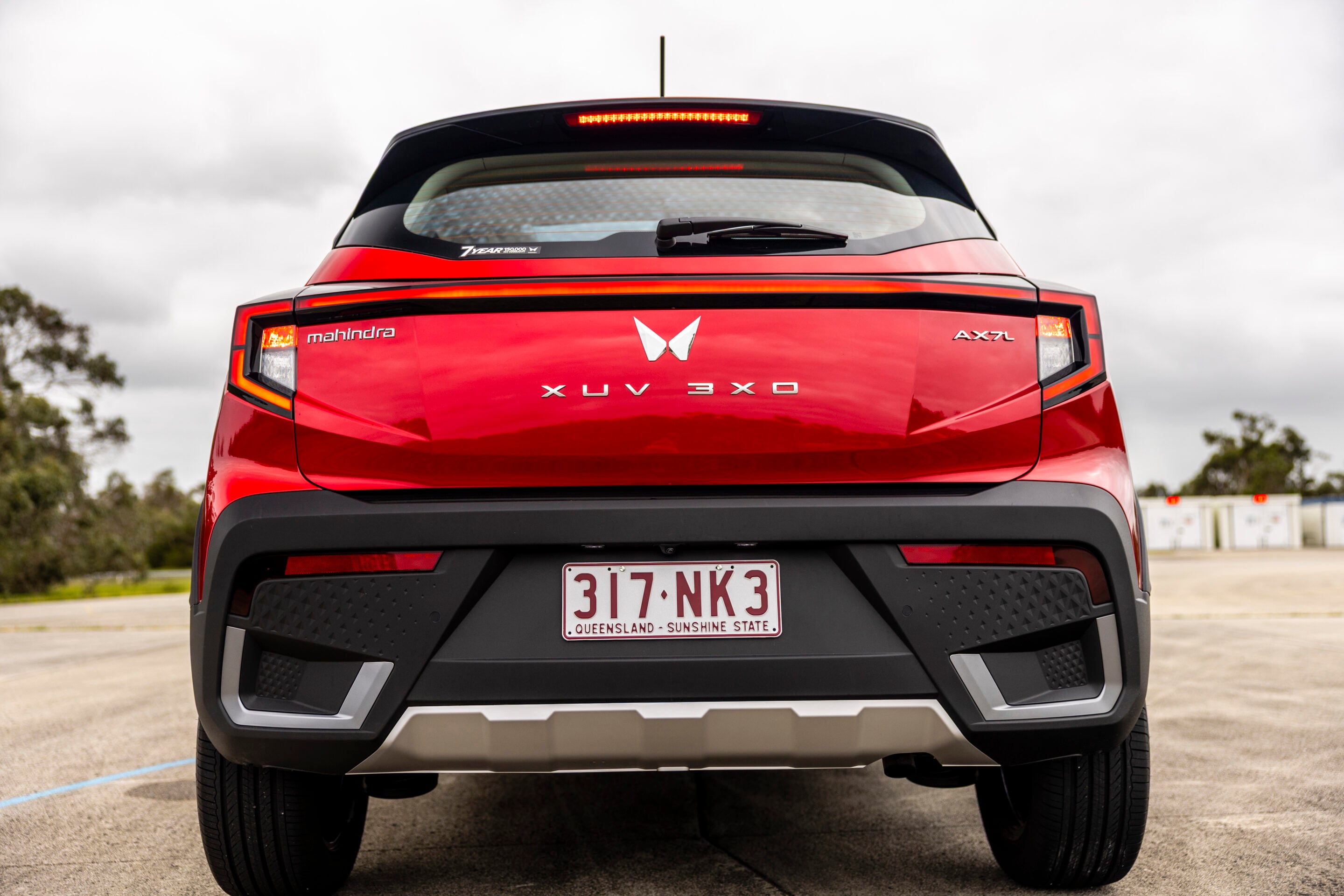
Specs
| Price | $26,990 (driveaway) |
|---|---|
| Body | Five-door, five-seat SUV |
| Drive | Front-wheel drive |
| Drivetrain | 1.2-litre three-cylinder turbo petrol |
| Power | 82kW @ 5000rpm |
| Torque | 200Nm @ 1500-3500rpm |
| Transmission | 6-speed automatic |
| Consumption | 6.5L/100km |
| Kerb weight | 1410kg |
| 0-100km/h | NA |
| L/W/H/W-B | 3990/1821/1647/2600mm |
| Boot space | 364L |
| Warranty | 7yr/150,000km |
| Safety rating | Untested |
After the first stint behind the wheel of the Skoda Kodiaq the judges – all of whom had tested the previous iteration – were unanimous. It looks and feels like a Skoda Kodiaq. There’s been no deviating from the well-worn path and in effect, that’s a good thing because the Kodiaq has always been a sensible choice for family buyers.
With its seven-seat capability and clever cabin, the Kodiaq aims to take down stablemate Volkswagen with a more sensible approach. For buyers the issue is that the price is almost lineball. The Sportline 4×4 on offer for Wheels COTY starts from $58,990 before on-road costs, and at the time of testing was available for $61,990 drive-away. Which means it’s effectively price positioned right alongside the Tayron. Like the Tayron though, the model we’re testing here sits in the middle of the three-model Kodiaq range.
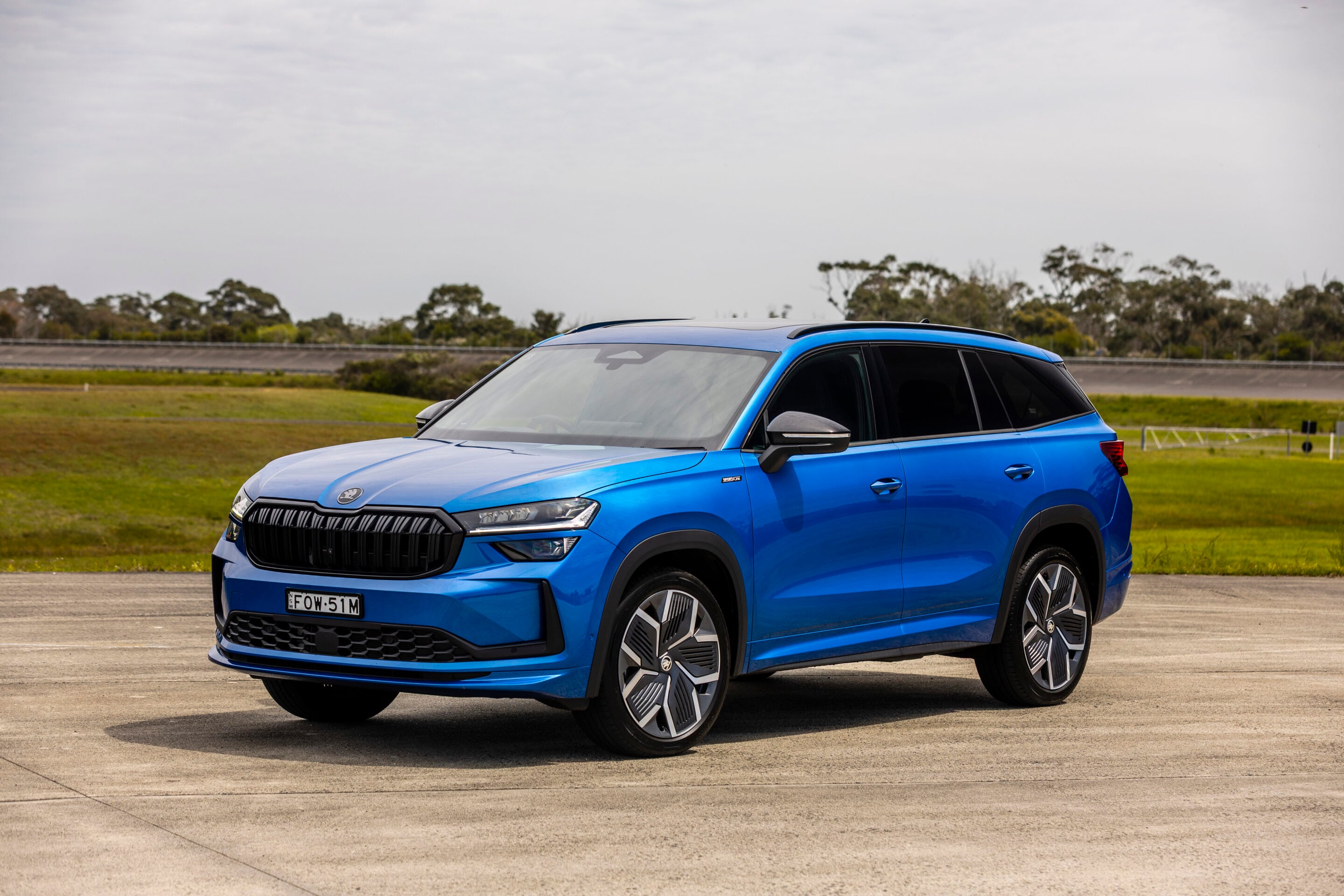
Skoda does run hard on its value proposition, though, countering Volkswagen’s five-year warranty with seven years of coverage and capped-price servicing to match. The question is whether Skoda’s value-first proposition has been eroded somewhat by its climbing price? The judges agreed that it has.
“As good as the Kodiaq is, why wouldn’t you just buy the Volkswagen?” That statement was uttered more than once during testing.
One reason for choosing the Skoda, however, are its points of difference, from its exterior looks to the set-up of the cabin. Some people might simply prefer to have a less recognisable badge in the driveway. Make no mistake, it is still a well-executed Volkswagen Group large SUV, and very deserving of making it to Round Two.
The judges noted Kodiaq’s excellent cabin, not just its design but its layout and positing of key controls and storage, as well as the choice of materials throughout. The seats are comfortable for occupants of all heights and sizes, visibility is a strong point, and the cabin has a bright, light-filled ambience to it – vital for family road trips.

Skoda has stayed the course we’ve come to expect from the brand – that is, clever and functional use of space with a point of difference. The hidden umbrella in the door that some owners don’t even know about is there, the rubbish bins that sit neatly into the door pockets, and general storage options throughout the cabin that ensure this large SUV makes a hell of a lot of sense for family buyers.
Like the Tayron, the judges noted the lack of space for adults in the third row and its ‘occasional’ use scenario. That aside though, the cabin is excellent, with wide door apertures opening to comfortable second-row seats that don’t feel like a park bench, where the kids will be able to charge their devices and store smaller items.
Kodiaq’s control systems and infotainment are an exercise in the simplicity of the old way of doing things. And an example of why the old way isn’t always a bad way. There are enough buttons and dials to ensure crucial functions can be easily and quickly accessed, with no messing around via the touchscreen. Call the judging team curmudgeons, but when you’re trying to change the radio station or blower fan setting on the fly, the presence of conventional controls is a godsend.

Having said that – and this is where Skoda’s smarts come to the fore – the Kodiaq has still delivered a slew of modern amenity in the form of a whopping 13-inch infotainment screen and configurable 10-inch driver display. Proof once more that you can cleverly mix old with new, and the controls that Skoda has included all work as they should without any recurring issues.
The judges liked the smoothness that’s been engineered into Skoda’s seven-speed dual-clutch, one of the better DCTs you’ll experience. Around town, in low-speed driving, the Kodiaq is precise and punchy, easy to manoeuvre and feels almost a segment smaller than it is. There’s a lightness and response to the controls that means it doesn’t feel heavy or underdone.
Out on the open road though, you’ll notice the heft a little more. The run from 80-110km/h, for example, when you roll out to overtake, doesn’t feel as sharp as the power delivery does lower down in the rev range. The judges also thought the Kodiaq didn’t deal with the nastier bumps as easily as the Tayron did, when driven back-to-back over the same rutted surfaces, and agreed that the ride tune erred more on the side of firm than it did comfort.
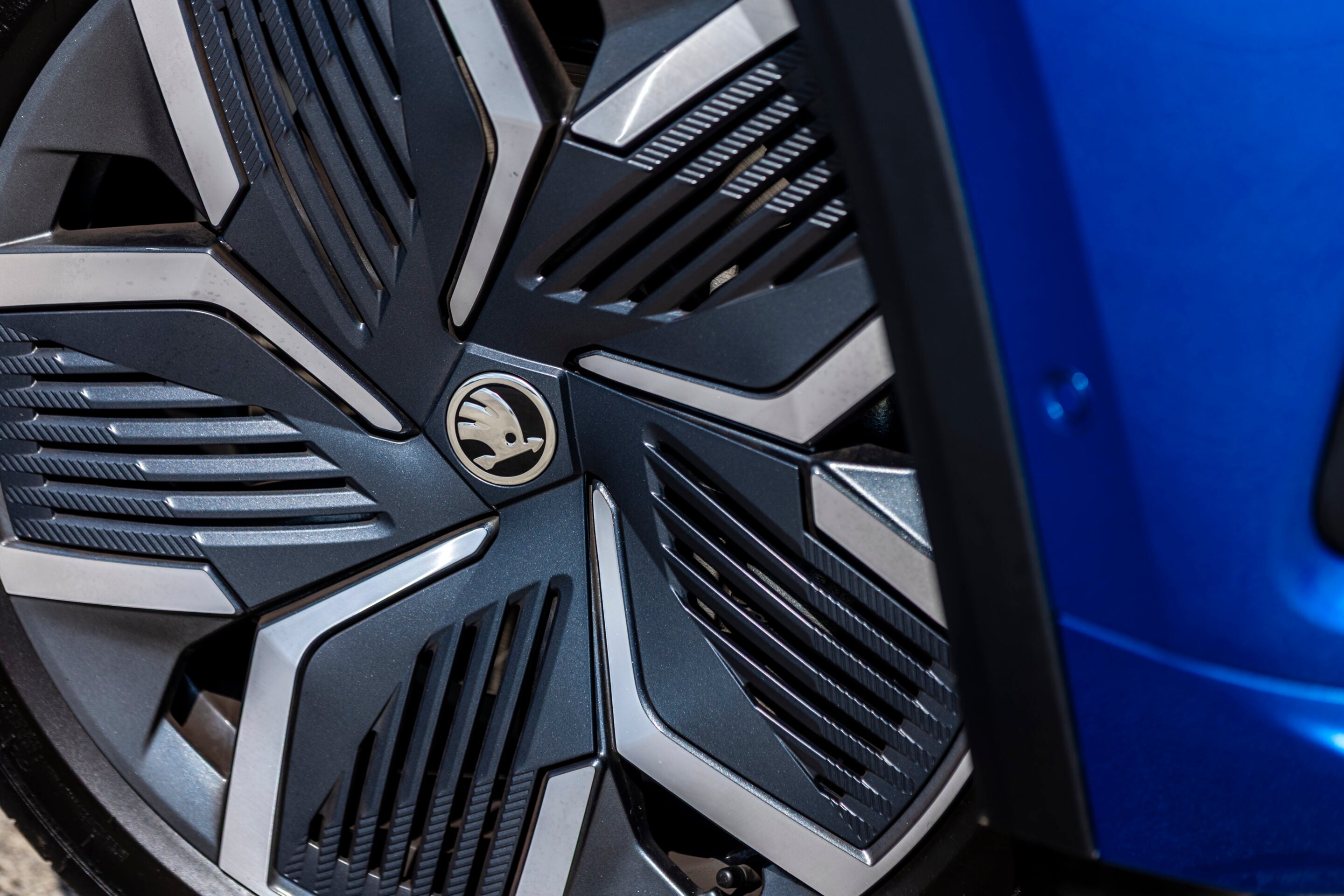
The other departure from Tayron, as noted by the judges, was the amount of noise intrusion into the Kodiaq’s cabin at highway speed. On coarse chip surfaces especially, tyre roar and wind noise make their way into the cabin, disturbing the otherwise comfortable confines.
On the positive side of the ledger, as noted by all the judges, was the way in which the Kodiaq feels tied down and balanced on any road. Turn in is sharp and reliable, the steering is excellent, and the firm suspension takes significant effort to unsettle. “You’d never feel bad about owning this car,” Gover said. “It’s a great thing to drive on roads that most Aussies will take on a family road trip.”
Skoda’s challenge now then – as solid as this revised Kodiaq is – is to keep punching from its higher price point against more premium badges that aren’t much more expensive. There’s more space and more equipment now with the Kodiaq, but it does come at a price. The third row is something of a novelty, like Tayron, and for now there’s no hybrid version when the segment almost demands it.
The updated Kodiaq is another high-achieving SUV from a manufacturer that has made a habit of impressing. It’s just not quite high achieving enough to get right to the pointy end of this year’s Wheels Car of the Year.
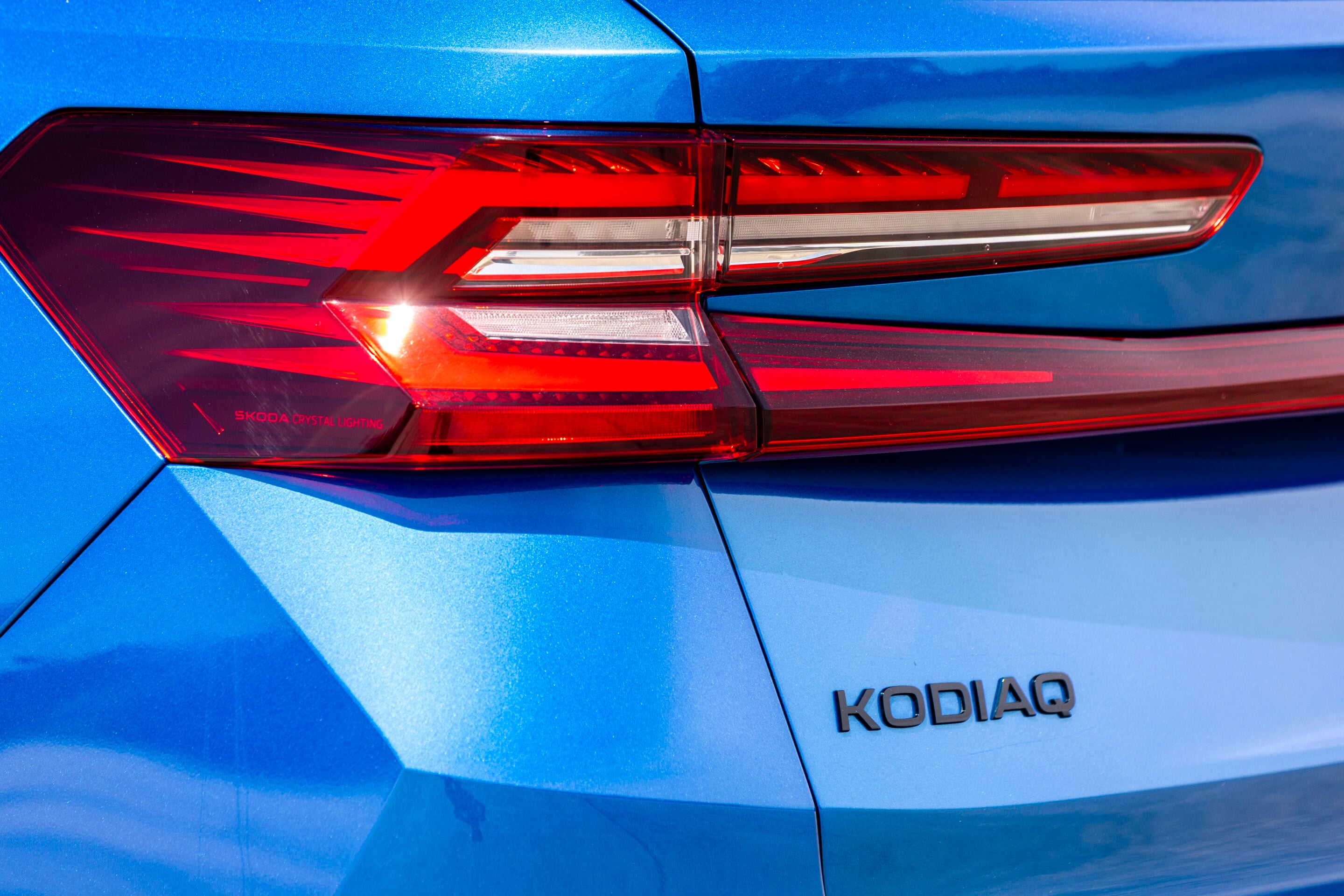
Specs
| Price | $58,990 (MSRP) $61,990 (DA) |
|---|---|
| Body | Five-door, seven-seat SUV |
| Drive | All-wheel drive (on demand) |
| Drivetrain | 2.0-litre four-cylinder turbo petrol |
| Power | 140kW @ 4200-6500rpm |
| Torque | 320Nm @ 1400-4100rpm |
| Transmission | 7-speed dual-clutch automatic |
| Consumption | 9.2L/100km |
| Kerb weight | 1885kg (tare) |
| 0-100km/h | 7.9 sec |
| L/W/H/W-B | 4758/1864/1659/2791mm |
| Boot space | 289L/794L/2035L |
| Warranty | 7yr/unlimited km |
| Safety rating | 5 star ANCAP (2024) |
The release of the Volkswagen Tayron (pronounced Tie-ron) earlier this year was fascinating. And that’s because the Tiguan Allspace has been a sales success in Australia, yet Volkswagen made the big call to replace its popular, well-known nameplate with a new name that needs to be promoted in a very crowded marketplace. The resulting SUV was present at Lang Lang for Wheels COTY testing.
From the minute the first drive loops were done, all judges knew this was yet another high quality Volkswagen SUV.
“Feels solid,” said Robinson. “Drives beautifully,” said Gover. “It’s got some punch to it,” said Morley.
And yet, none of that is surprising. Wheels is accustomed to expecting quality from a new Volkswagen, and that’s exactly what the Tayron delivers.
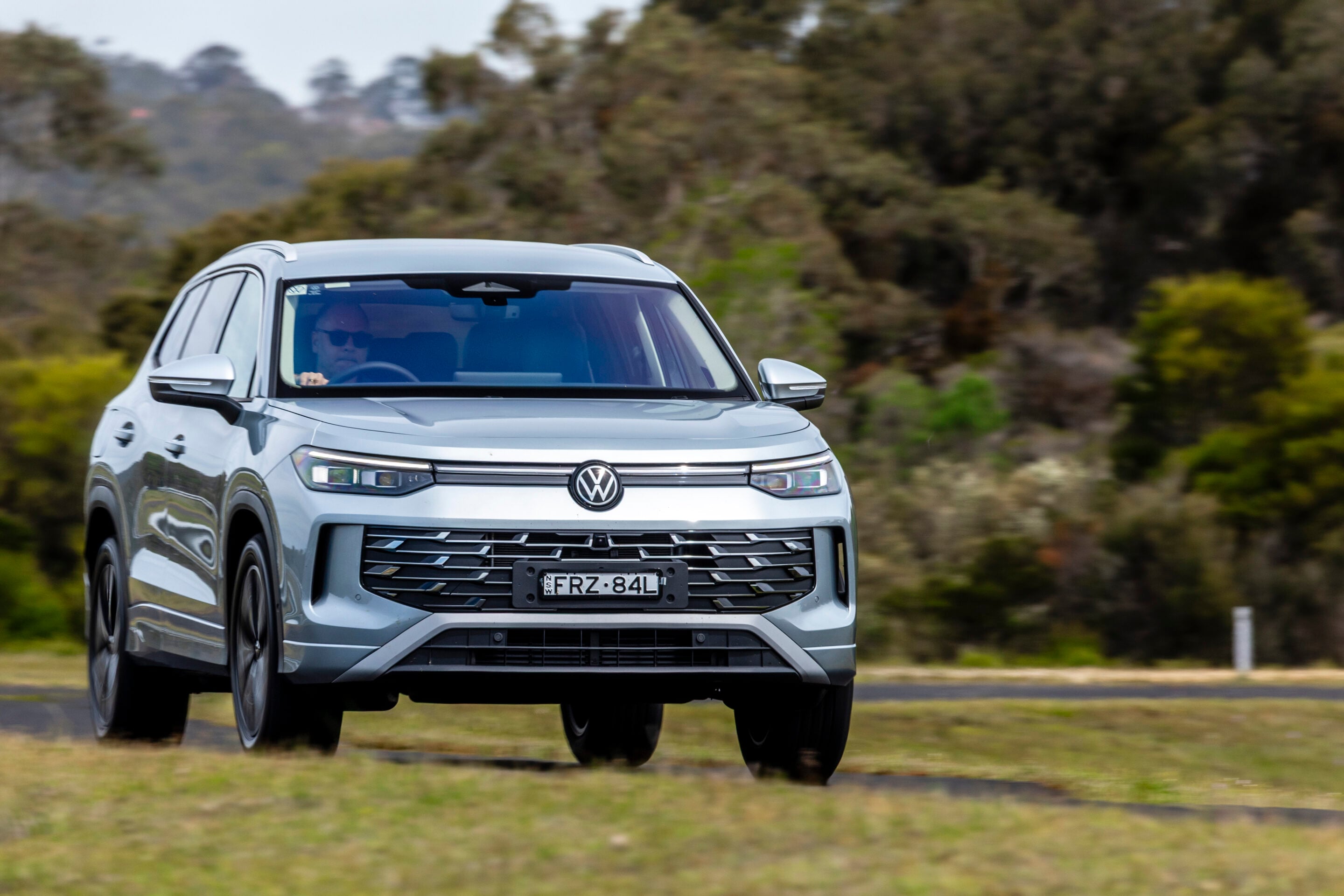
The judges had the 150 TSI Elegance for COTY, with a starting price of $59,490 before on-road costs. If you think you’re getting a lot of SUV for the money, you are. On demand all-wheel drive, a 2.0-litre four-cylinder turbocharged petrol engine, and 150kW/320Nm. Volkswagen’s seven-speed dual clutch is a good one, and the claimed 7.7L/100km is frugal for an SUV of this size and capability. Keep in mind, too, you can get into a Tayron for as little as $48,290 before on-road costs.
Tayron has value covered, then, with a sharp starting price, a long list of standard equipment, and a cabin that features both quality design and choice of materials.
Factor in Volkswagen’s strong value on the second-hand market and it means you know exactly what you’re in for if you buy a Tayron. Value plays a large part in why it gets down to the pointy end of the field this year.
In a sea of otherwise unassuming SUVs, the judges noted the new Tayron’s ability to stand out from the crowd with classy styling and distinct LED light signatures that ensure you won’t blend into the crowd. Once again, Volkswagen has delivered an upmarket yet understated design that ensures the buyer will feel good about their purchase. While that’s not something you can measure, it is important in a style-conscious world.
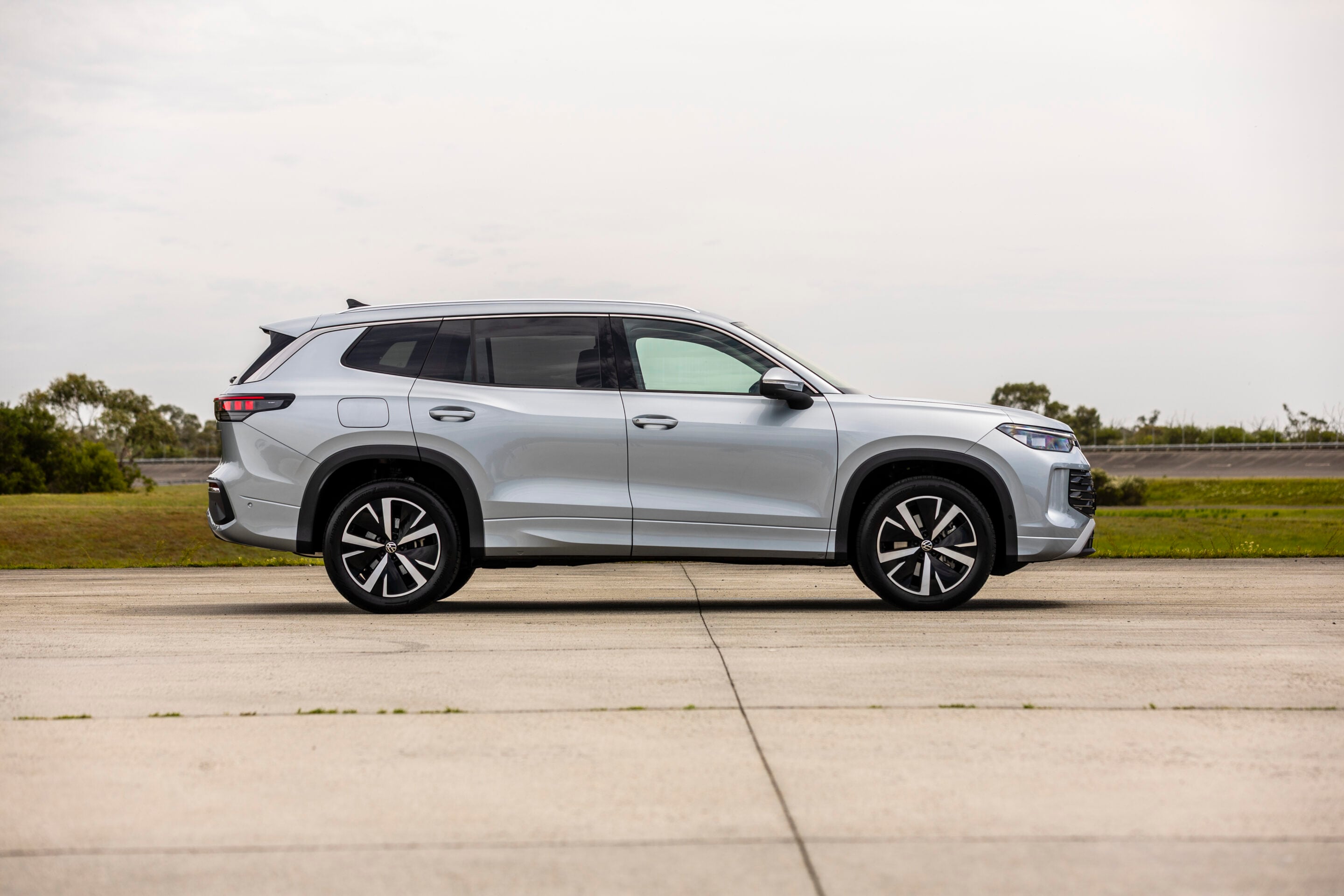
Australians are hoovering up SUVs in this segment in ever increasing numbers. Where once sedans dotted the highways and cities, medium and large SUVs are now the default family vehicles of choice, and Volkswagen has made a habit of delivering a luxury experience for those buyers without the luxury price tag. The desire for a three-row SUV is rabid, to say the least, and the Tayron picks up where Tiguan Allspace left off in this space.
Attention to detail inside the cabin is a strong point. That’s true of even the base 110TSI model, but the 150TSI we have on test is well-equipped, premium and comfortable. Volkswagen has fitted acoustic glass for example, to ensure noise intrusion is controlled as much as possible. “It’s genuinely quiet out on the road loop,” Gover said. That sense of insulation on any road surface, at any speed, only adds to the premium feel when you’re on the move.
The judges all noted the third row as ‘occasional only’ for adults, but it will work for those of you with children you need to get to and from the weekly sports run. There’s a five-seater as well, with luggage space for that model coming in at 885L, countering the seven-seater’s 850L. The judges loved the near-flat floor in the boot space, too, meaning it’s actually useful for loading and transporting items.
Volkswagen’s tech inclusions work, repeatedly and reliably, and are easy to decipher for first timers. How about putting the wireless charge pad somewhere that isn’t in the way? Done. On the subject of smartphones, connect yours and it stays connected. Numerous other manufacturers could take note of Volkswagen’s determination to blend modern technology with a more traditional feel to the gauges and controls, listening to feedback for some previous models that had moved too far in the direction of less is more. As such, there is nothing to fear in regard to working out and getting familiar with the controls you’ll be using on a daily basis.
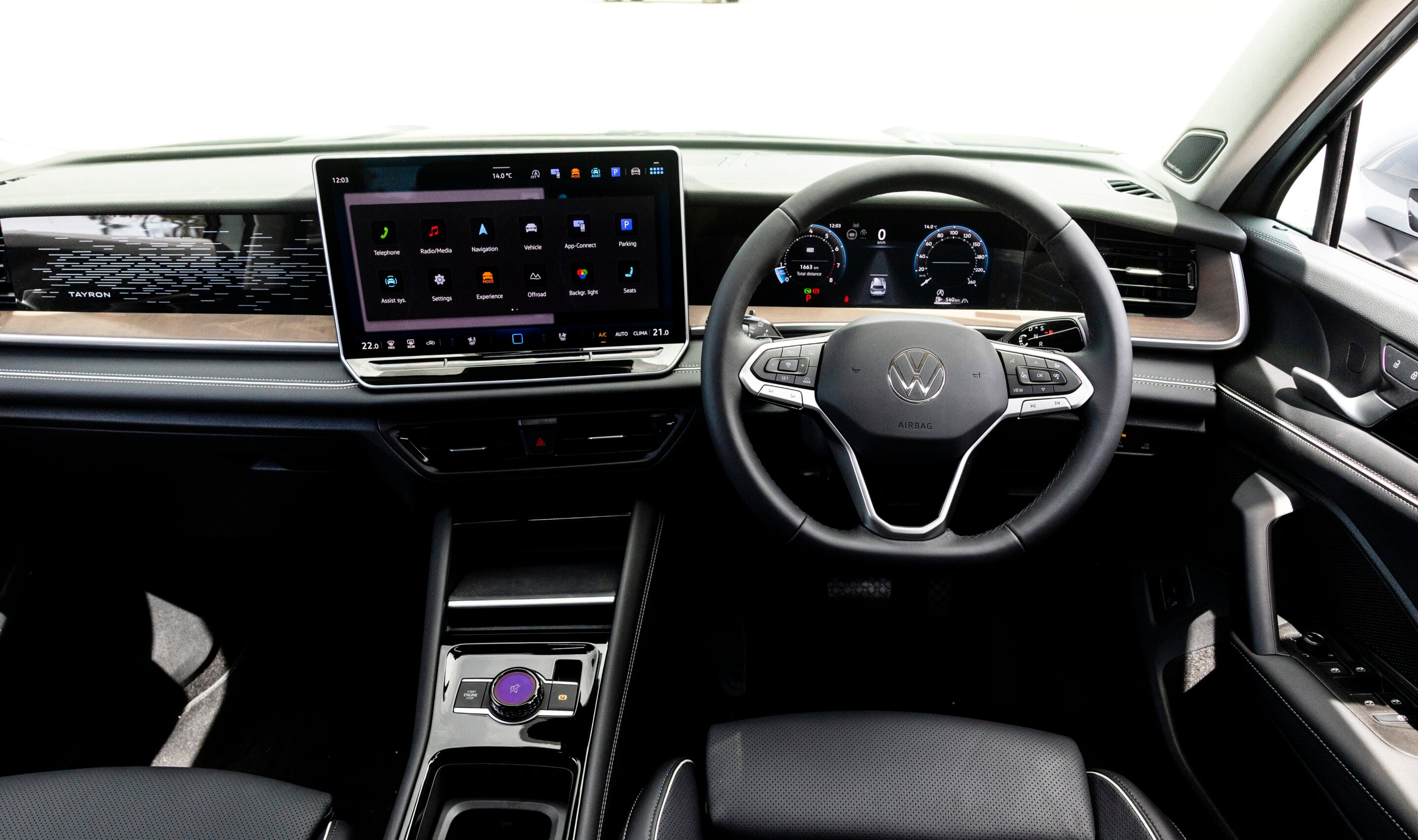
Where the Tayron impressed the judges most, though, was from behind the wheel. Keep in mind, the range topper gets 195kW/400Nm Golf GTI power, but this 150TSI is plenty fast enough on any road, even in variable conditions. Lang Lang offered up its customary four-seasons-in-one-day variability, and even torrential rain couldn’t unsettle the Tayron when hustled at speed.
The 150TSI is absolutely more rapid and more capable than this segment calls for. Grip is excellent, bump insulation is impressive and the general ride quality – especially when added to the level of cabin refinement – is beautifully catered for. The Tayron’s steering, brakes and all-round balance are fantastic, meaning you have to try hard to unsettle it.
Tayron isn’t perfect, but it’s fair to note that no COTY entrant is, even if some come close. As noted, the third row seats are tight, pricing – despite still being sharp – is a steeper ask than the Tiguan Allspace it replaces and the R-Line suspension tune is not for Australia’s less than average outer urban road network.
The Tayron is however, an excellent SUV from a manufacturer making a habit of executing them. It takes a deserving seat out of the early rounds of judging for this year’s COTY and ensures family buyers can still have some fun behind the wheel. Even the judges will admit the Tayron is evidence that SUVs don’t need to be bloated and boring. Still, it’s not quite a Car of the Year.
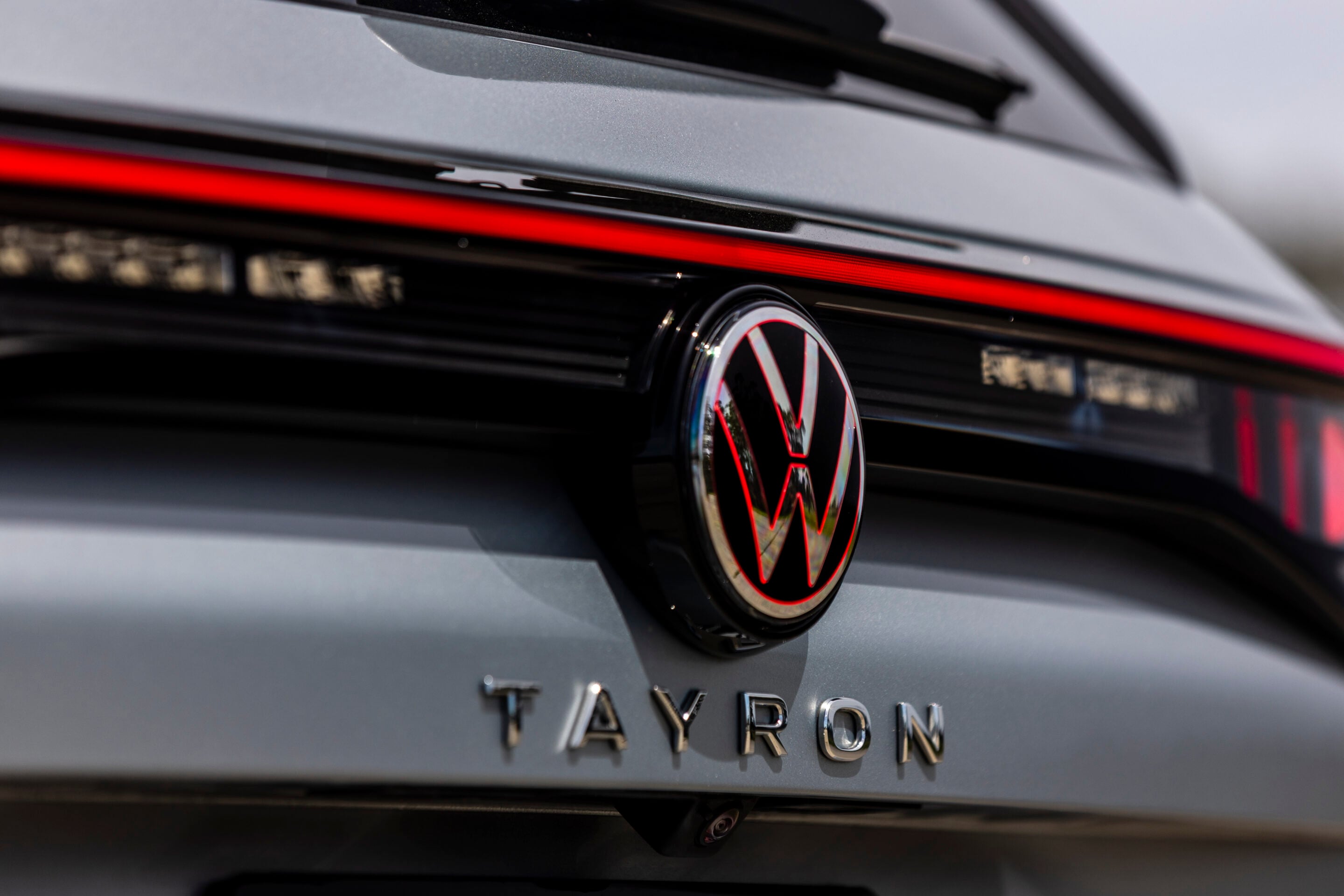
Specs
| Price | $59,490 (MSRP) |
|---|---|
| Body | Five-door, seven-seat SUV |
| Drive | All-wheel drive (on demand) |
| Drivetrain | 2.0-litre four-cylinder turbo petrol |
| Power | 150kW @ 6000rpm |
| Torque | 320Nm @ 1500-4400rpm |
| Transmission | 7-speed dual-clutch automatic |
| Consumption | 7.7L/100km |
| Kerb weight | 1829kg (tare) |
| 0-100km/h | 7.4 sec |
| L/W/H/W-B | 4792/1853/1674/2791mm |
| Boot space | 345L/850L/1905L |
| Warranty | 5yr/unlimited km |
| Safety rating | 5 star ANCAP (2025) |
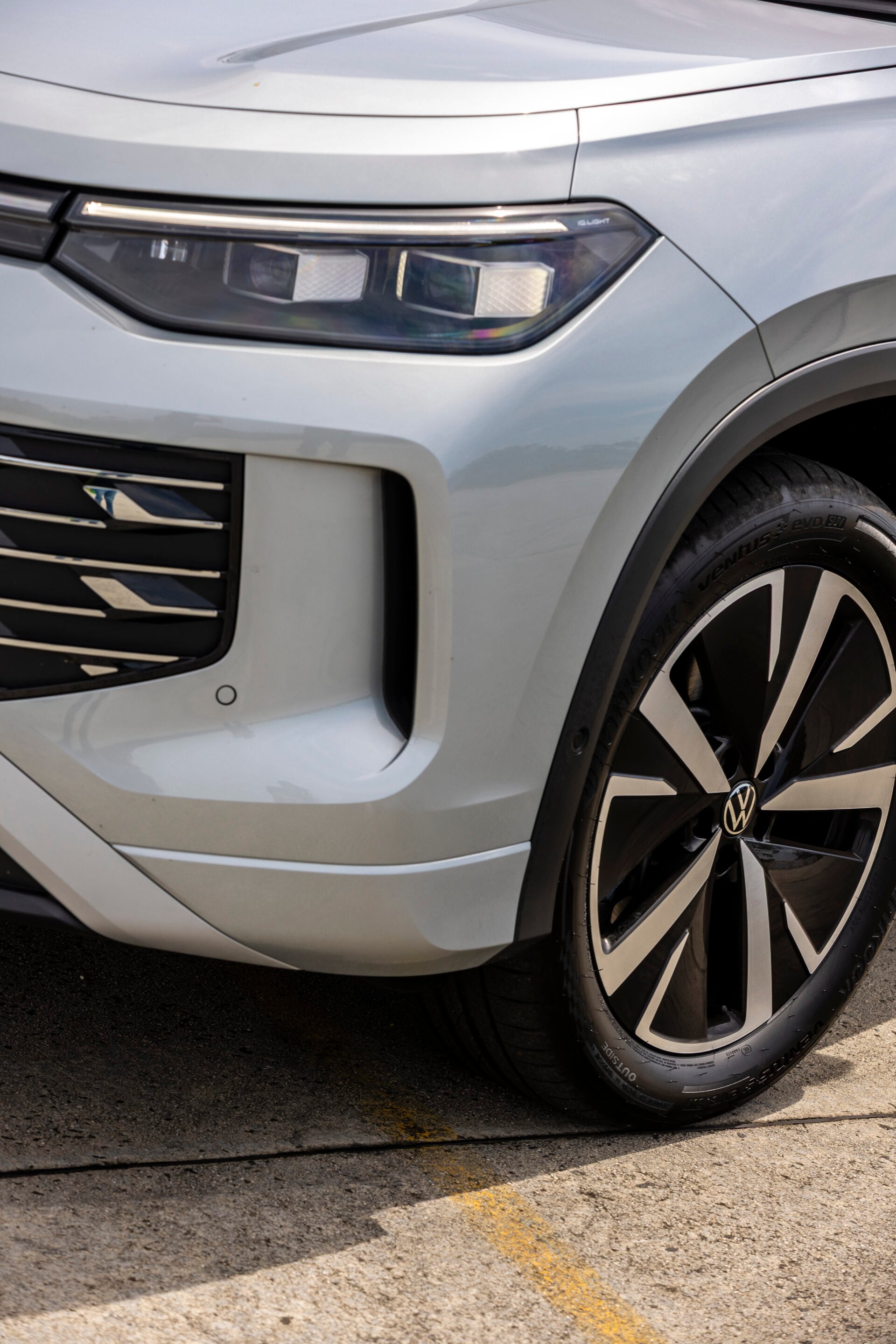
Job one when assessing the Volvo EX30 Cross Country is figuring out what it’s actually for. It is, after all, an all-wheel-drive, jacked-up SUV, yet its pure electric driveline tends to preclude it from attacking the Oodnadatta Track.
Its performance aspirations are clear, too, with twin electric motors delivering a combined 315kW of thrust and 543Nm. But a kerb mass of just shy of two tonnes will always see it playing in the forwards, rather than on the wing.
In reality, the transformation to the Cross Country version of the EX30 is a pretty commonly used move from the Volvo playbook and has been for decades now. You add some wheel arch extensions, bigger wheels and tyres, all-wheel-drive, hike the ride height and call it a Cross Country. The end result certainly looks interesting with a distinctly SUV set of general proportions, but some truly Scandi-Fwooar detailing.
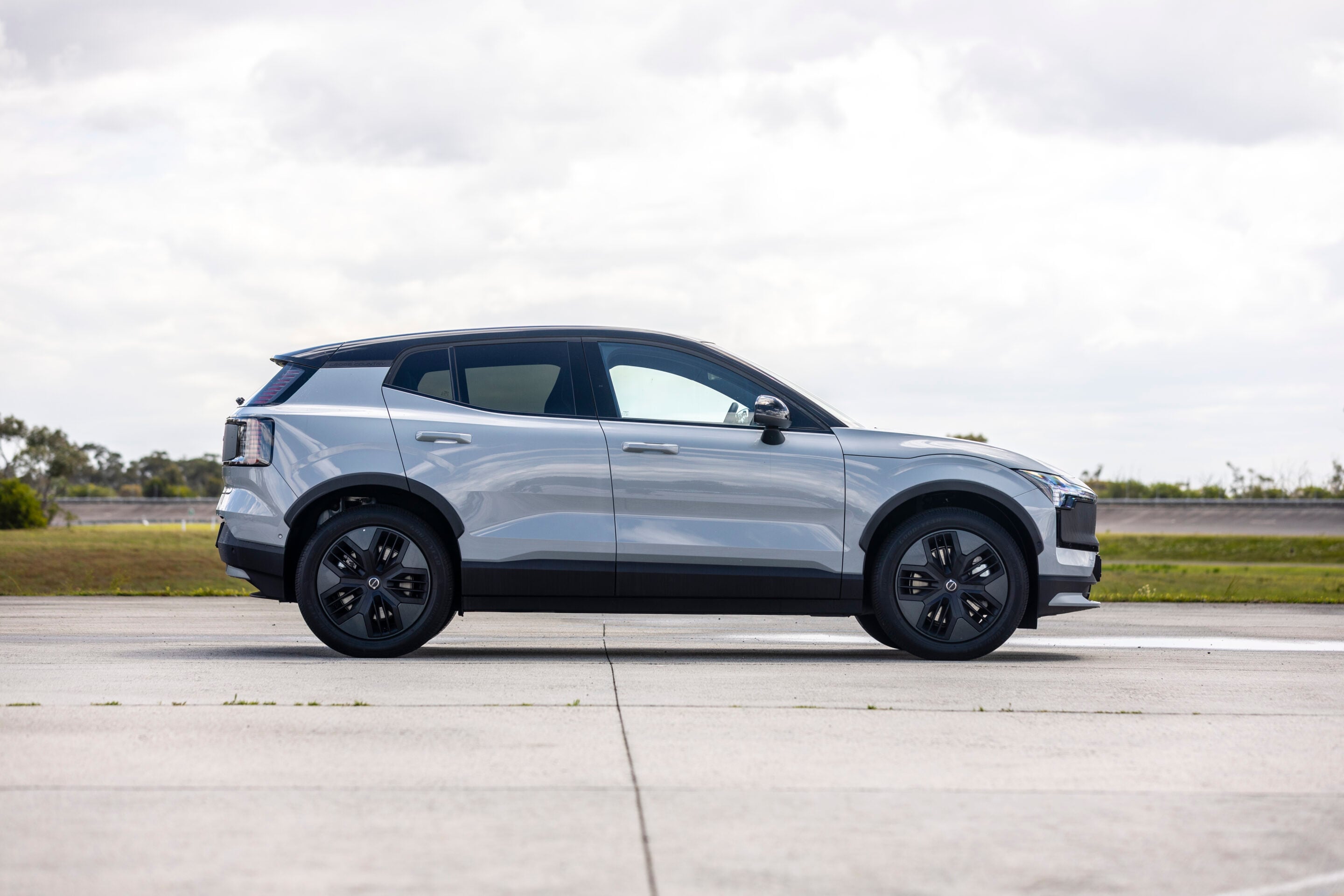
So, trips to the snowfields, then? Sure, and it’ll get you to the chain-bays pretty damn quick with a 0-100km/h time of sub-four seconds. What about impressing the neighbours? Another big thumbs up; the interior is funky as all get out with the square steering wheel, and the groovy, cast aluminium (that’s what they look like, anyway) interior door handles give the thing some real wow factor.
But you can’t help wondering whether all that calculated cool is at the expense of some practicality. For instance, the lack of instruments dead-ahead of the driver mean all the info is displayed Tesla-style on a portrait-mounted central screen. A head-up display would soften the collision between fashion and form here, but there isn’t one (a head-up display, that is).
The Volvo is far from huge inside, either, with a luggage capacity of 318 litres, although that expands to 1000 litres if you fold the rear seat down.
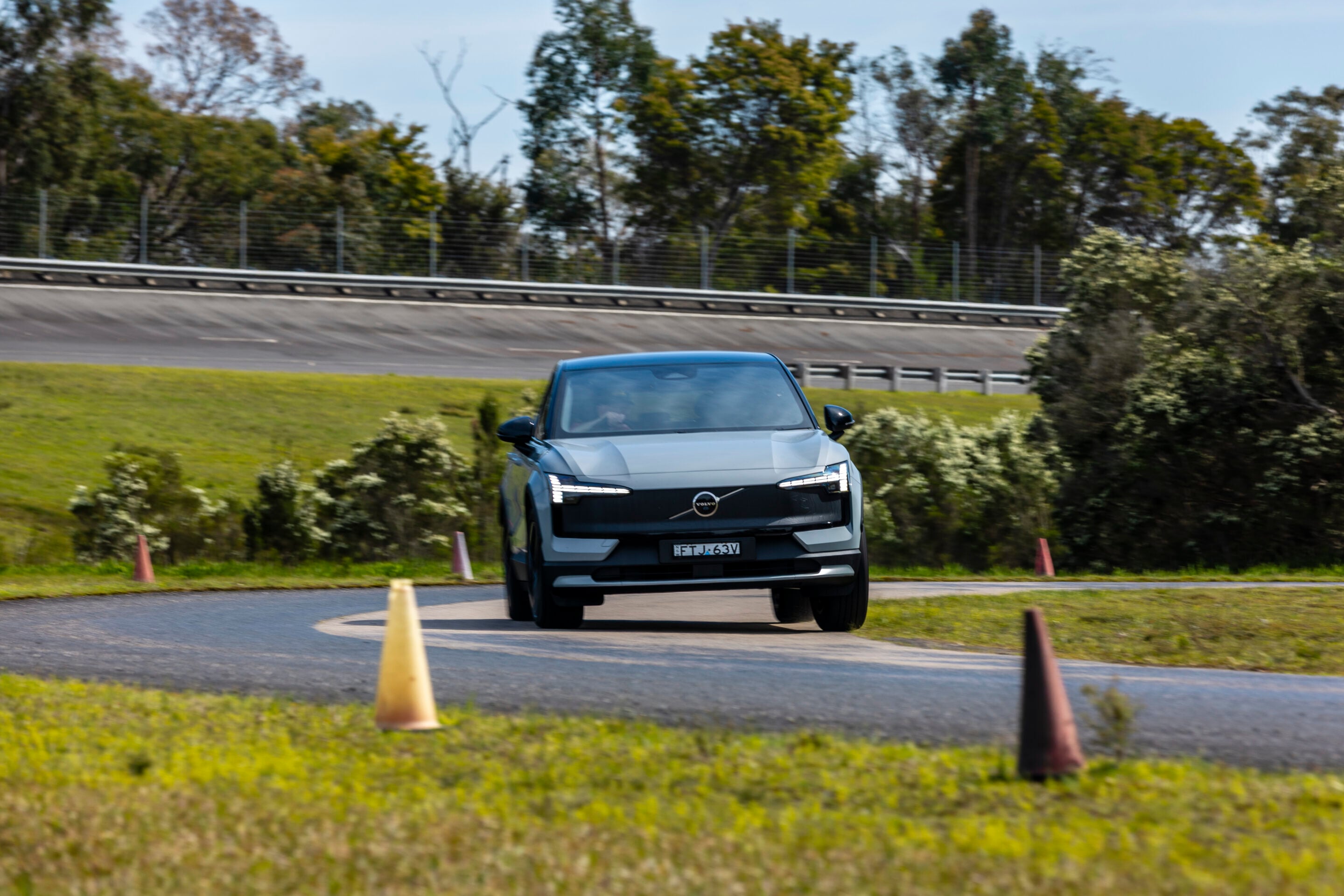
The performance speaks for itself, but there’s always the EV question-mark of what happens to range if you start to get cheeky with the accelerator pedal. As it is, Volvo claims a 417km range and energy usage is a relatively high 19.1kWh per 100km. On a three-phase 16-amp socket (which almost nobody has at home) you’re looking at a charge time of eight hours, while a DC fast-charger will take the 69kW battery from 10 to 80 per cent charged in 28 minutes. Decent numbers, but nothing earth-shaking.
Sticking with the physics for a moment, the EX30’s ride and handling equation is likewise determined by falling apples and text books. Thanks to the kerb mass of the Cross Country, not to mention the unsprung weight of those big wheels and tyres, the engineers have been required to fit springs to suit. The end result is far from terrible, but if you pay attention, there’s a sense that the small-bump ride is being compromised by the large bump control. But the EX30 is in good company there.
Other elements, however, are pure Volvo including the comprehensive safety kit that includes a centre air-bag, whiplash protection built into the seats, Isofix points, a Harman Kardon stereo and a five-year Google Assistant subscription.
You’ll like it, but will you love it?
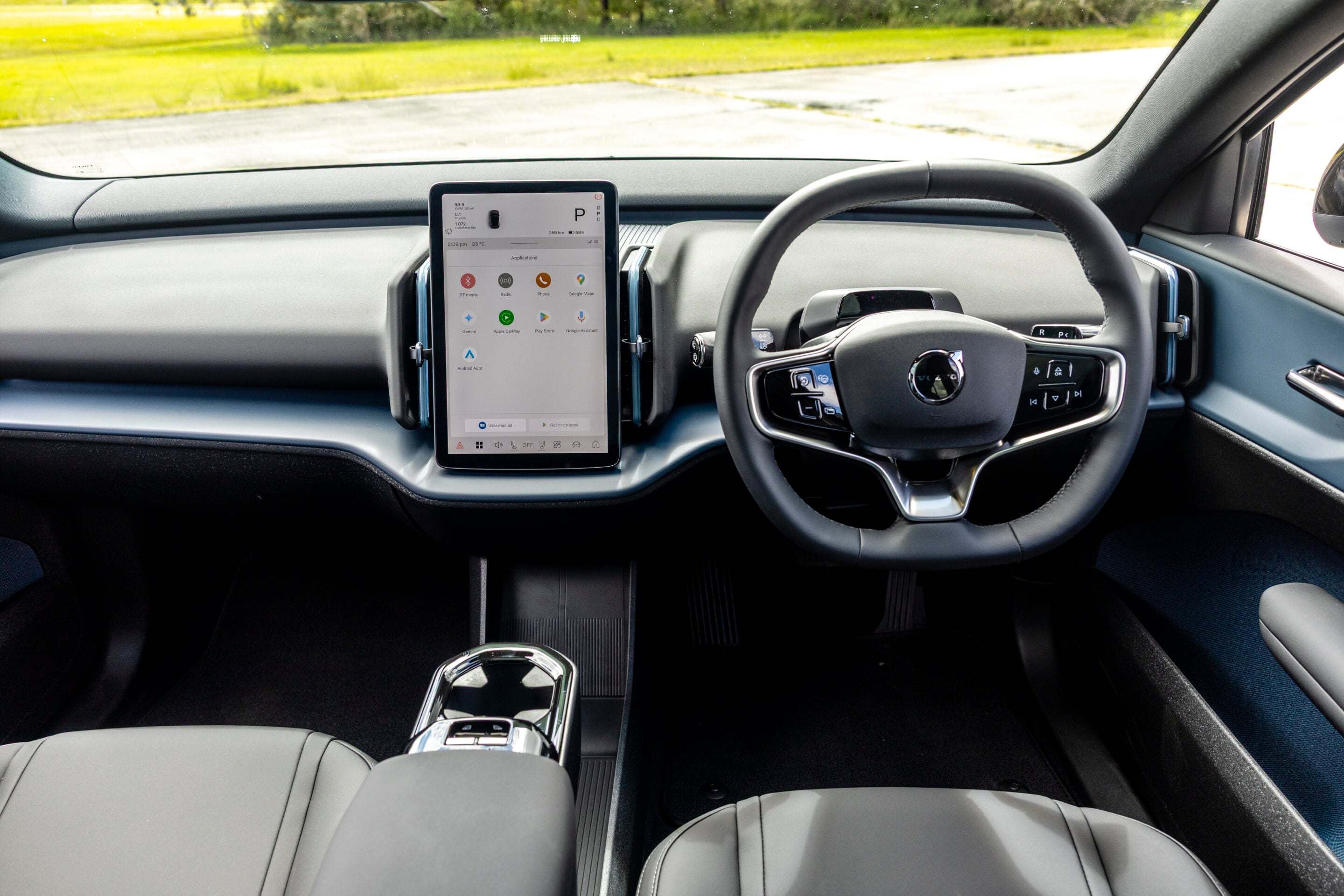
Specs
| Price | $69,990 (MSRP) |
|---|---|
| Body | Five-door, five-seat SUV |
| Drive | All-wheel drive (on demand) |
| Drivetrain | Dual electric motors, 69kWh lithium-ion battery |
| Power | 315kW combined |
| Torque | 543Nm combined |
| Transmission | Single-speed reduction gear |
| Consumption | 19.1kWh/100km, 417km range WLTP |
| Kerb weight | 1910kg |
| 0-100km/h | 3.7 sec |
| L/W/H/W-B | 4233/1850/1567/2650mm |
| Boot space | 318L/1000L |
| Warranty | 5yr/unlimited km |
| Safety rating | 5 star ANCAP (2024) |
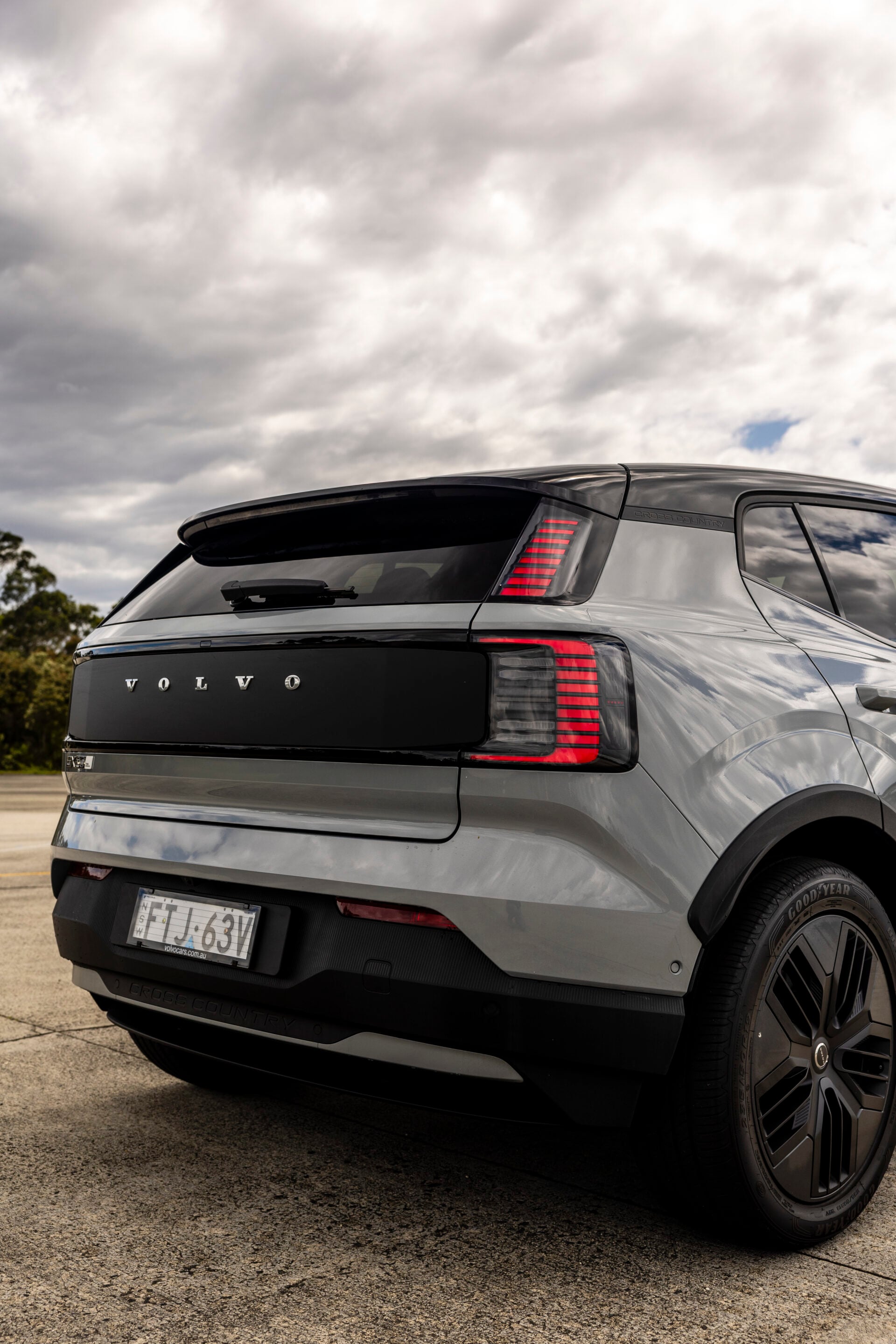
Now with self-driving capability – love it or not – the Model Y attempts to reinvent itself in an ever-deepening crowd of not just electric options, but efficient hybrids and plug-in hybrids, too.
That love-it-or-not theme is a common one also, not just with electric vehicles in general, but with the Tesla brand in particular. The reality is, though, Tesla puts forward an incredibly compelling case for those of you wanting to move into the EV realm. In regard to value, and we’ll look at the Model Y specifically in a minute, Tesla has the market at its mercy.
Its public charging infrastructure is better and more extensive than any other. And it works. All the time. Tesla’s app is easier and more intuitive to use than the competition, and the way in which the app controls the car is immediately evident as being designed by people who understand modern technology. Quite simply, the all-round Tesla ‘ecosystem’ (to use a modern branding term), is second to none.
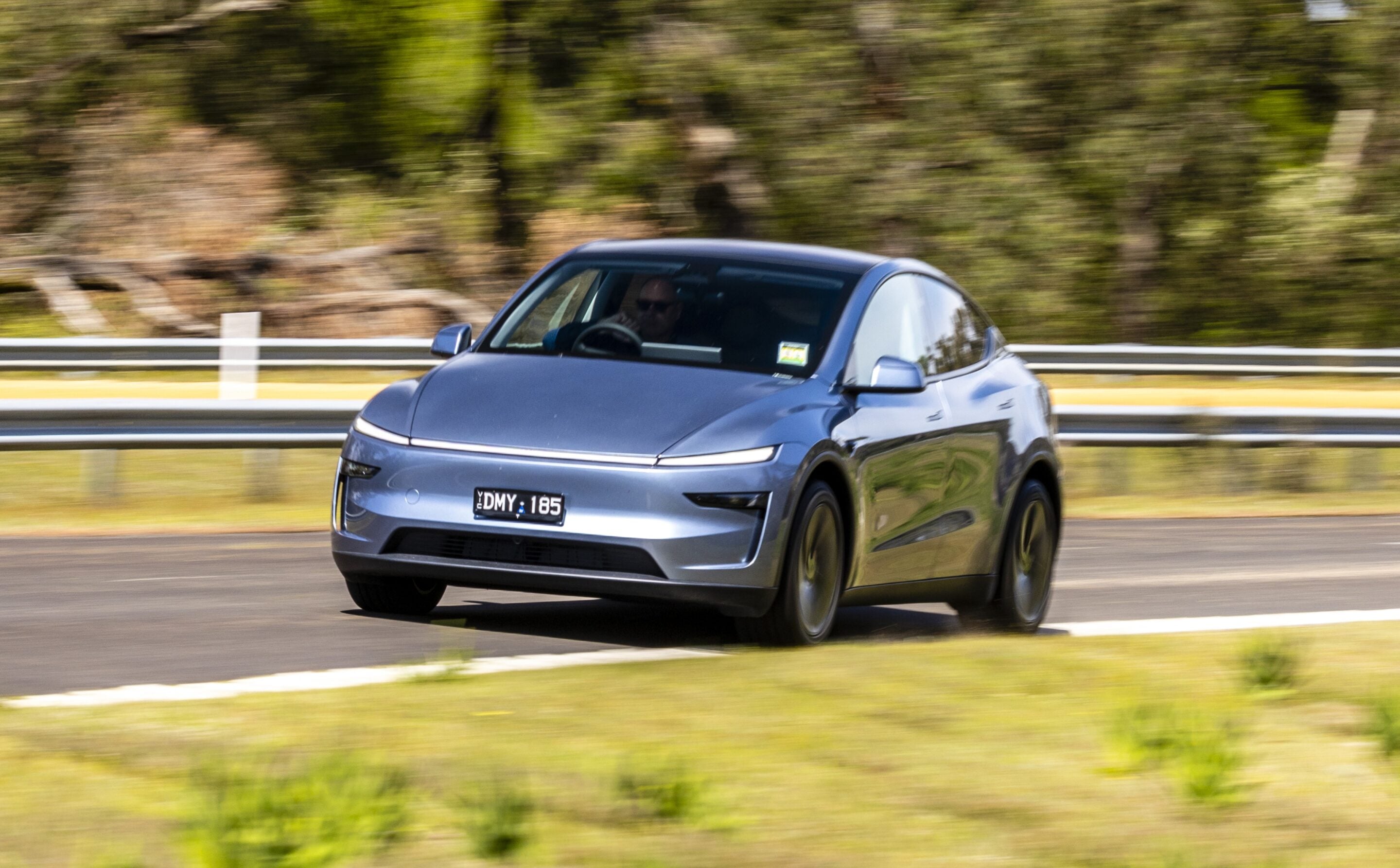
Wheels chose the middle of the range, the Long Range AWD, which starts from $68,900 before on-road costs, as the smart-money pick in the line-up. It continues the value story with twin motors, an 81kWh lithium-ion battery pack, 286kW and 510Nm, 0-100km/h in 4.8 seconds and a WLTP claimed range of 600km.
The judges noted efficiency as a strong point, too, with Tesla’s claim of 13.8kWh/100km extremely close to the figures you’ll get in the real world. In many cases, you’ll get an even better return.
The new Model Y’s styling has been sharpened up, ensuring it looks more contemporary than the old model, which had started to age somewhat. Negatives are few and none of them reflect the way the Model Y behaves or drives. The glass roof, for example, which can be covered with an optional clip-in shade, is good in theory, but can’t cope with the roasting Aussie sun in the middle of summer.
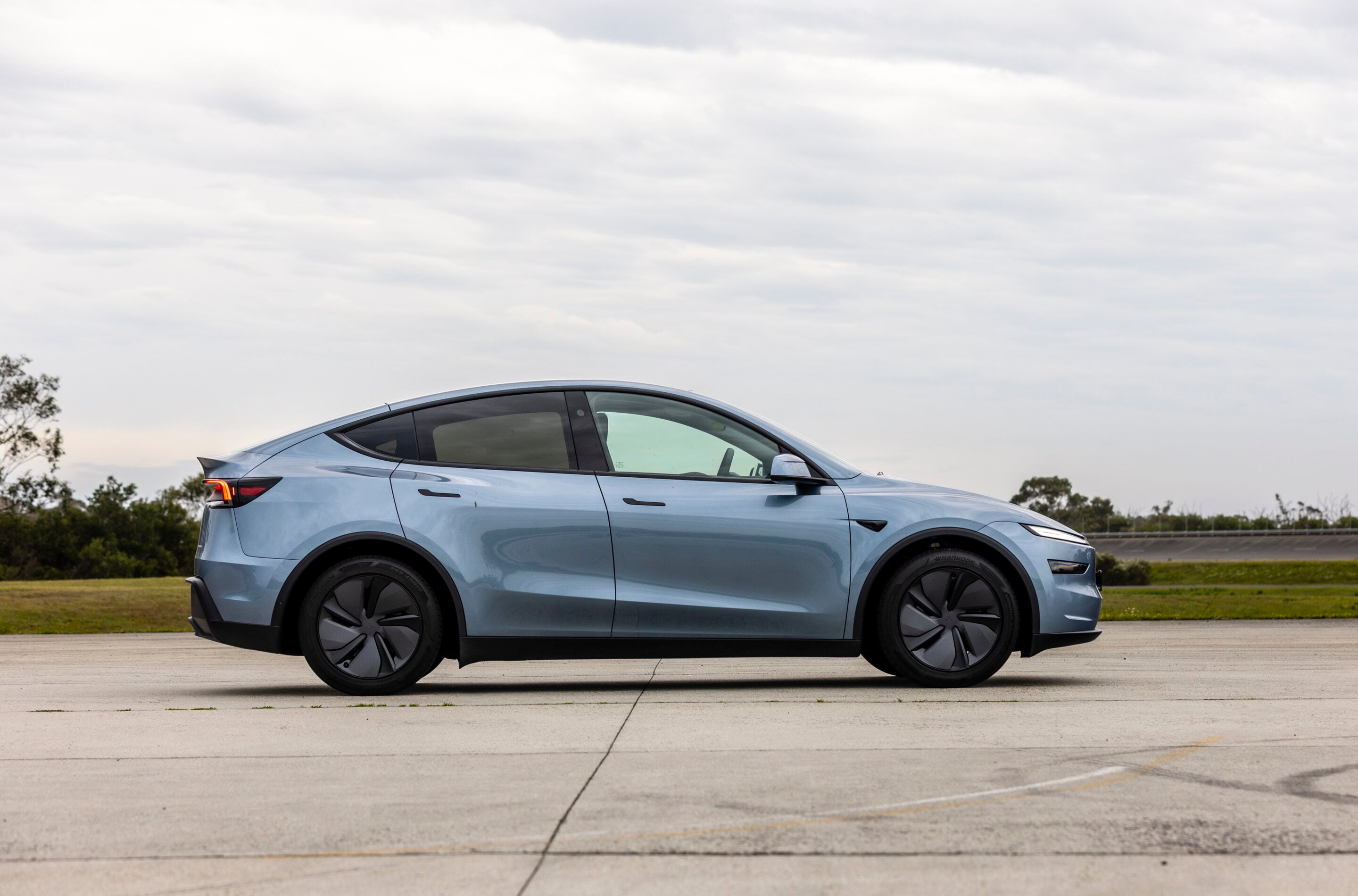
The lack of a driver’s display, head-up display or gauge cluster of any kind, is a deal breaker in the eyes of the judging team. Likewise, the move away from a shift stalk on the steering wheel, and the replacement of that with a touch and slide function – again on the screen – which is neither intuitive or easy to decipher.
“Stupid, silly, nonsensical, unnecessary.” All terms used by the judging team to describe some of Tesla’s choices. In this instance, Tesla has gone a little too far. However, integrating rear seat entertainment into an 8.0-inch screen that also controls temperature and ventilation in the second row? That’s genius.
Annoyances aside, the Tesla infotainment screen works incredibly well once you work out its complexities. It’s still unfathomable that there’s no smartphone-mirroring connectivity either, Tesla still sticking to its ‘use our system’ guns, for better or worse. Storage space is excellent – 938L out to 2022L when you fold down the second row.
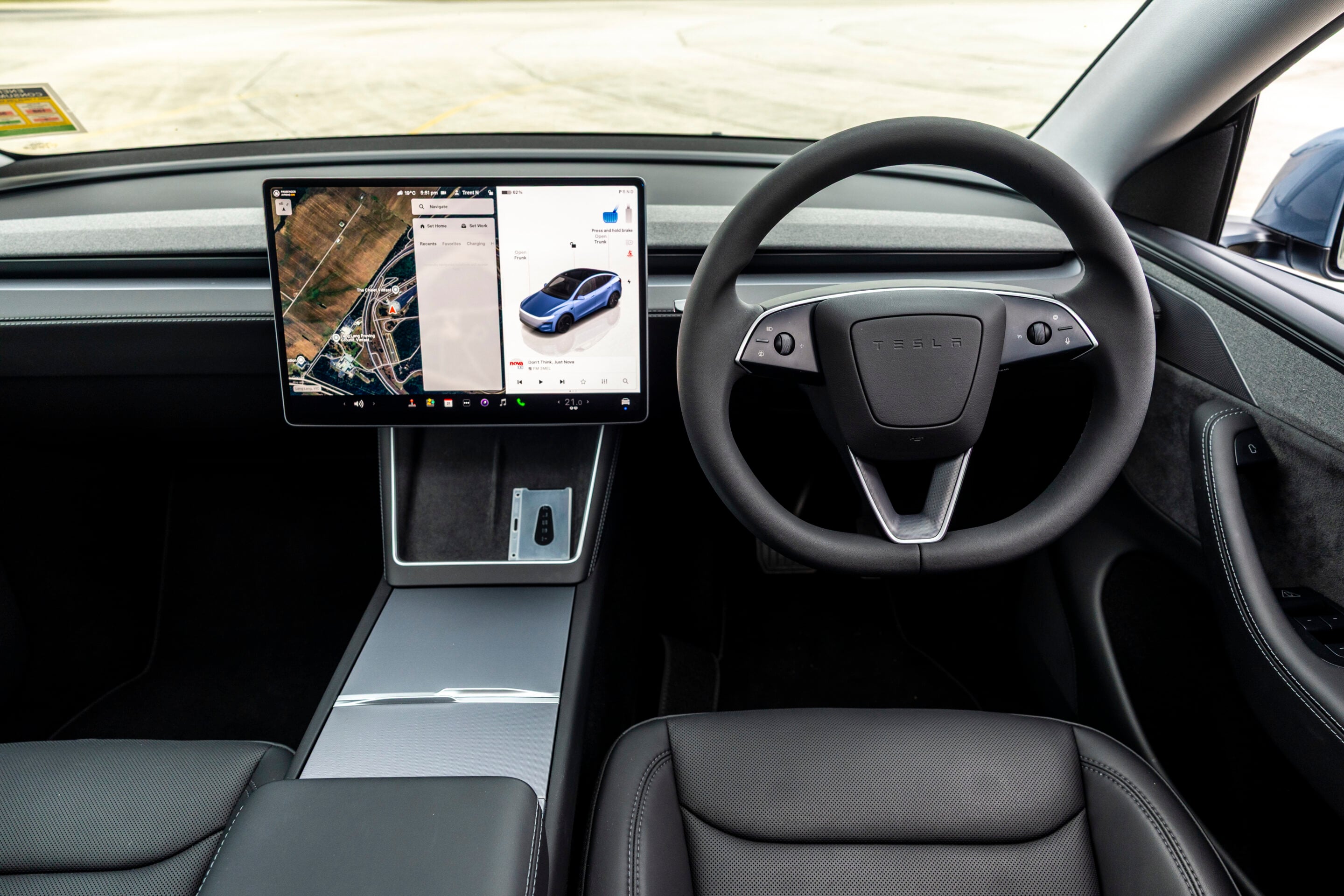
The big change for this update, though, is the quality of the ride and bump absorption, which has been markedly improved along with general refinement – most specifically, inside the cabin. The judging team noted the quality of the interior insulation on Lang Lang’s ride and handling course, a section of coarse chip designed to unsettle the best cars on the market.
The judges agreed that the Model Y is a car that should absolutely be on your shopping list if you’re considering a switch to electric. It’s competent, solid, excellent to drive and energy efficient.
Let’s leave the self-driving functionality to cartoons and sci-fi movies for the moment, though.
Specs
| Price | $68,900 (MSRP); as tested: $70,400 (MSRP) |
|---|---|
| Body | Five-door, five-seat SUV |
| Drive | All-wheel drive (on demand) |
| Drivetrain | Dual electric motors, 81kWh (est) lithium-ion battery |
| Power | 286kW (est) |
| Torque | 510Nm (est) |
| Transmission | Single-speed reduction gear |
| Consumption | 13.8kWh/100km (est), 600km range WLTP |
| Kerb weigh | 1992kg |
| 0-100km/h | 4.8 sec |
| L/W/H/W-B | 4792/1982/1624/2890mm |
| Boot space | 938L/2022L (VDA) |
| Warranty | 4yr/80,000km |
| Safety rating | 4yr/80,000km |
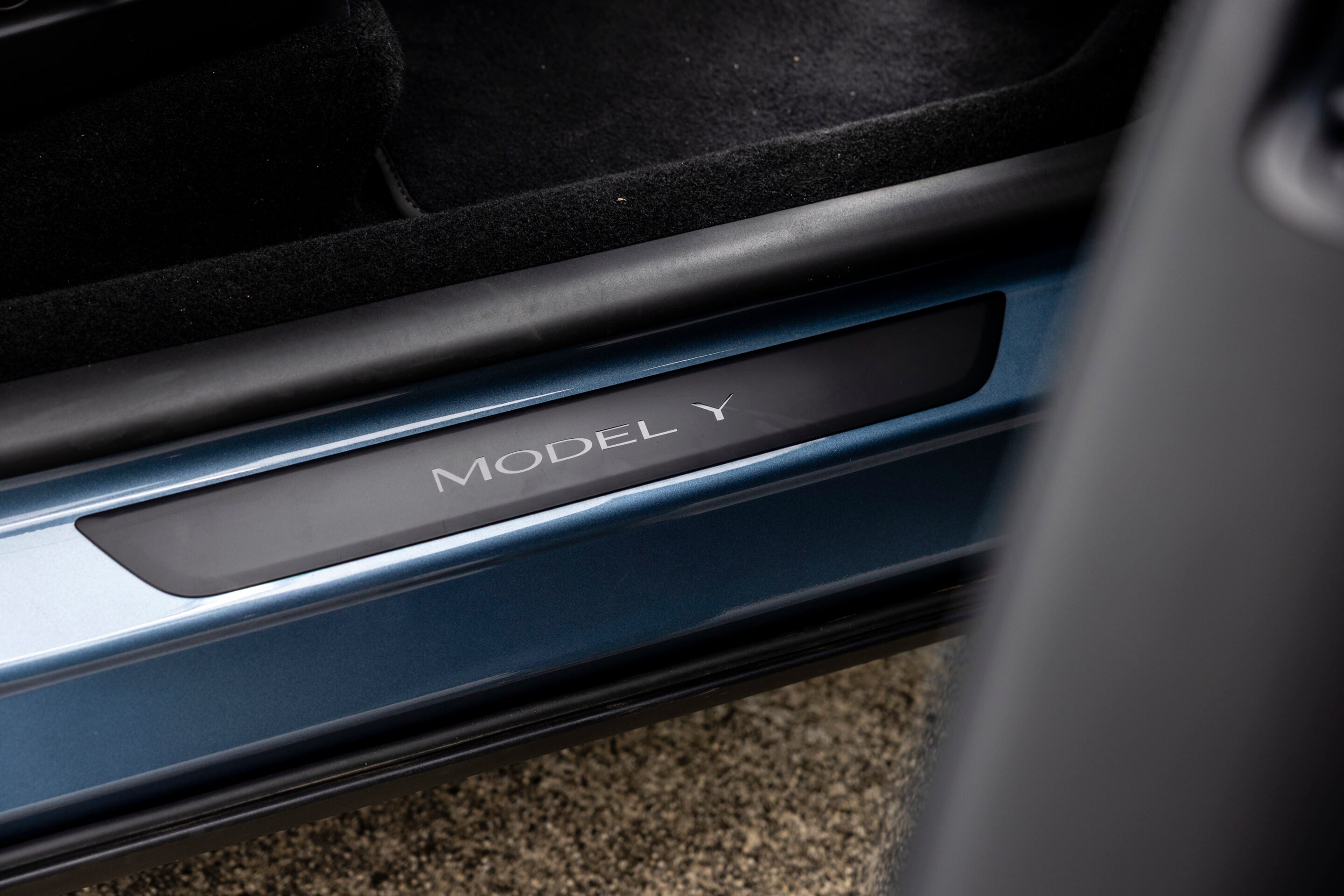
Maybe it’s because the brand itself is part of the landscape. Perhaps it’s the fact that the car in question knows what it is, where it fits in and who’s buying it. Maybe it’s because there are no pretensions or inflated boasts to harpoon during the first drive. Whatever, the Subaru Forester is four-wheeled comfort food.
Lacking the Darth-Vader styling of some of its mid-sized SUV peers, and without the buzzing, whirring pure-electric driveline that continues to polarise the marketplace, the Forester is wholesome and satisfying. Just like Grandma used to make.
That said, just as time-honoured recipes get constantly tweaked, the latest Forester has grown an evolved hybrid element to its driveline, in this case a pair of electric motors teamed with the trademark flat-four petrol engine. But don’t assume the two motors act directly on the front and/or rear axles, because this technology – borrowed from Toyota, it should be noted – is quite a bit more sophisticated than that.
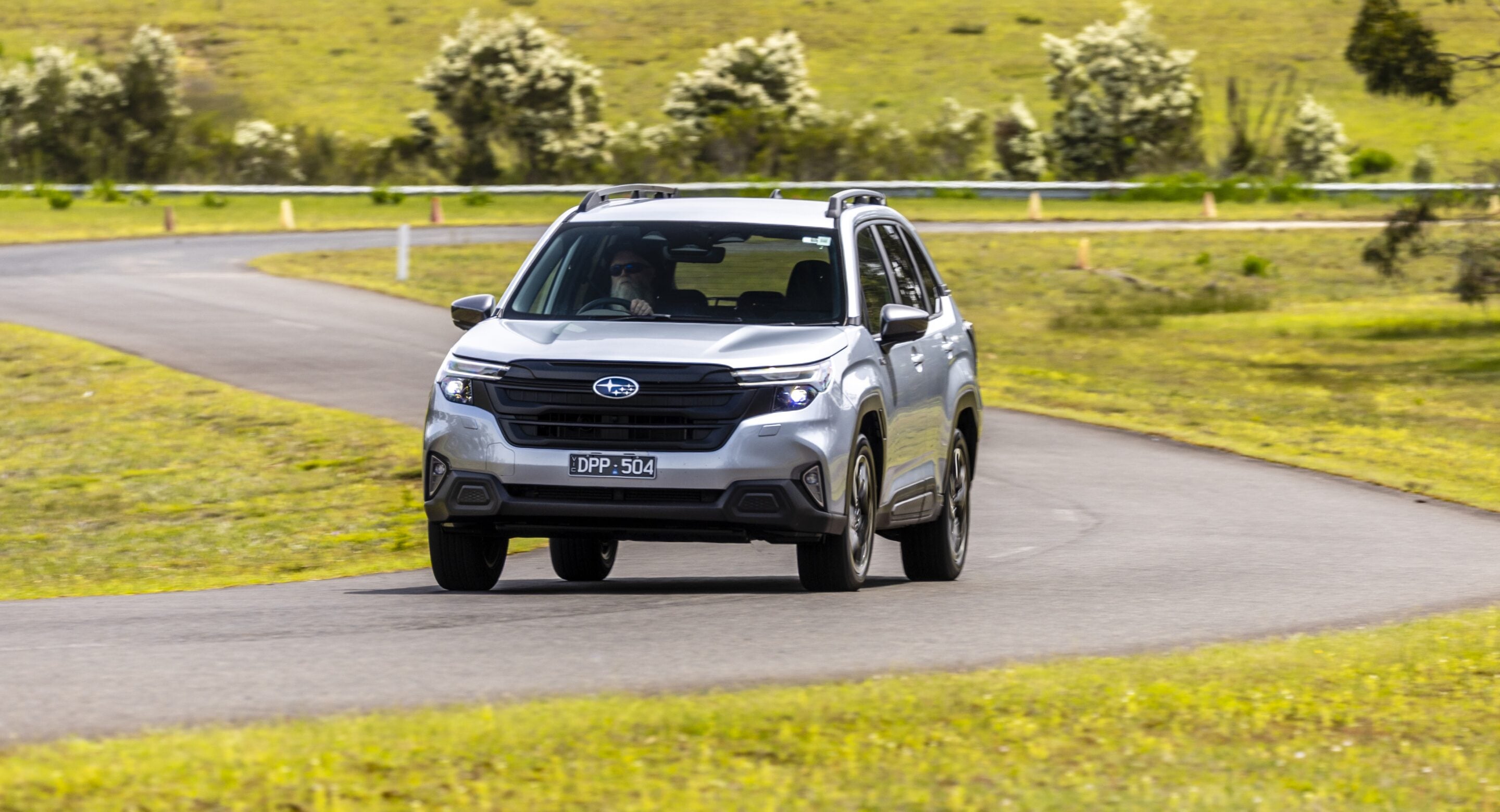
The 2.5-litre petrol engine is connected inline with the first electric motor, the latter providing starting duties for the flat-four as well as charging the hybrid battery. The second electric motor is the bigger hitter, is also mounted inline and provides drive to the wheels as well as harvesting otherwise lost power through regenerative braking. The combined 145kW and 276Nm then drive through what’s called an E-CVT, although that’s a bit misleading. That’s because this is a CVT that uses no belts or cones, but instead calls on compound planetary gearsets (like a conventional automatic) and then sends the (moderate) urge through a transfer case and centre differential to each wheel.
The result is a car that maintains mechanical (rather than mechanical/electric) all-wheel-drive and allows Subaru to cut-and-paste its ‘symmetrical four-wheel-drive’ paragraph from the old brochure to the new one.
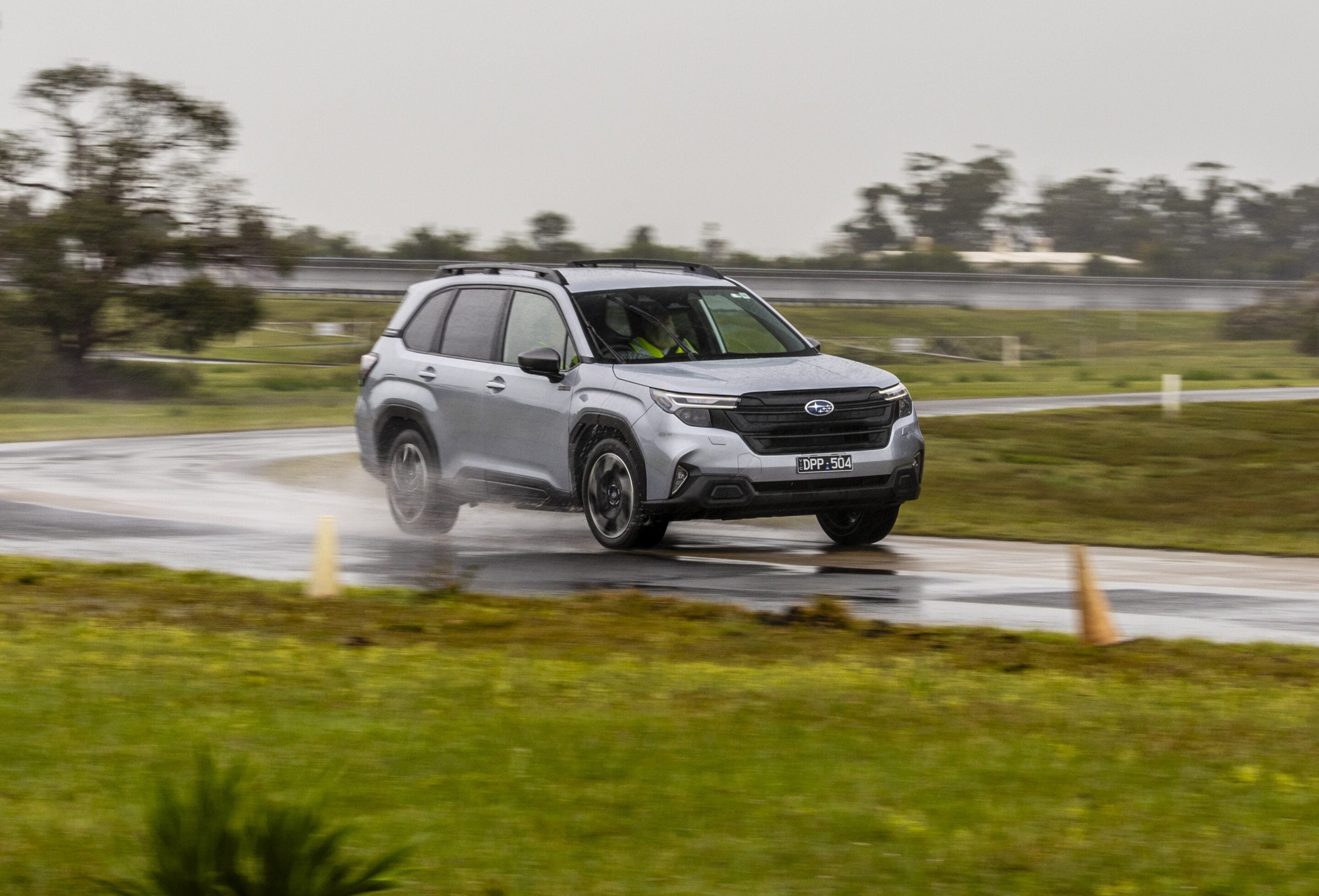
Although Subaru tags the system as a ‘Strong Hybrid’, the apparent gains are less chest-pounding. Sure, the Forester never feels lame nor lacking the will to accelerate, but equally, there are other hybrid systems that are clearly calculated and calibrated to offer more zing. And 6.2 litres per 100km? Not bad, but no PHEV.
But the driveline is smooth and flexible even if, after all these years, the horizontally opposed layout still plays that familiar, quirky tune.
The steering is vice-free, logical in its gearing and weight, and bordering on actually entertaining. The Forester never actually encourages you to press on, but you may just find yourself doing so anyway… it’s that sort of car.
The Forester’s other point of difference remains its off-road chops and, while the Sube won’t take you to The Cape on the Old Telegraph Track, it will get you to mountain-bike tracks and campsites that plenty of other SUVs with bulging wheel-arch flares and chunky alloy wheels simply will not. Just as Subaru has persisted with the boxer engine layout and its all-wheel-drive platform for so long, neither will it be allowing the soft-roader to become any softer.
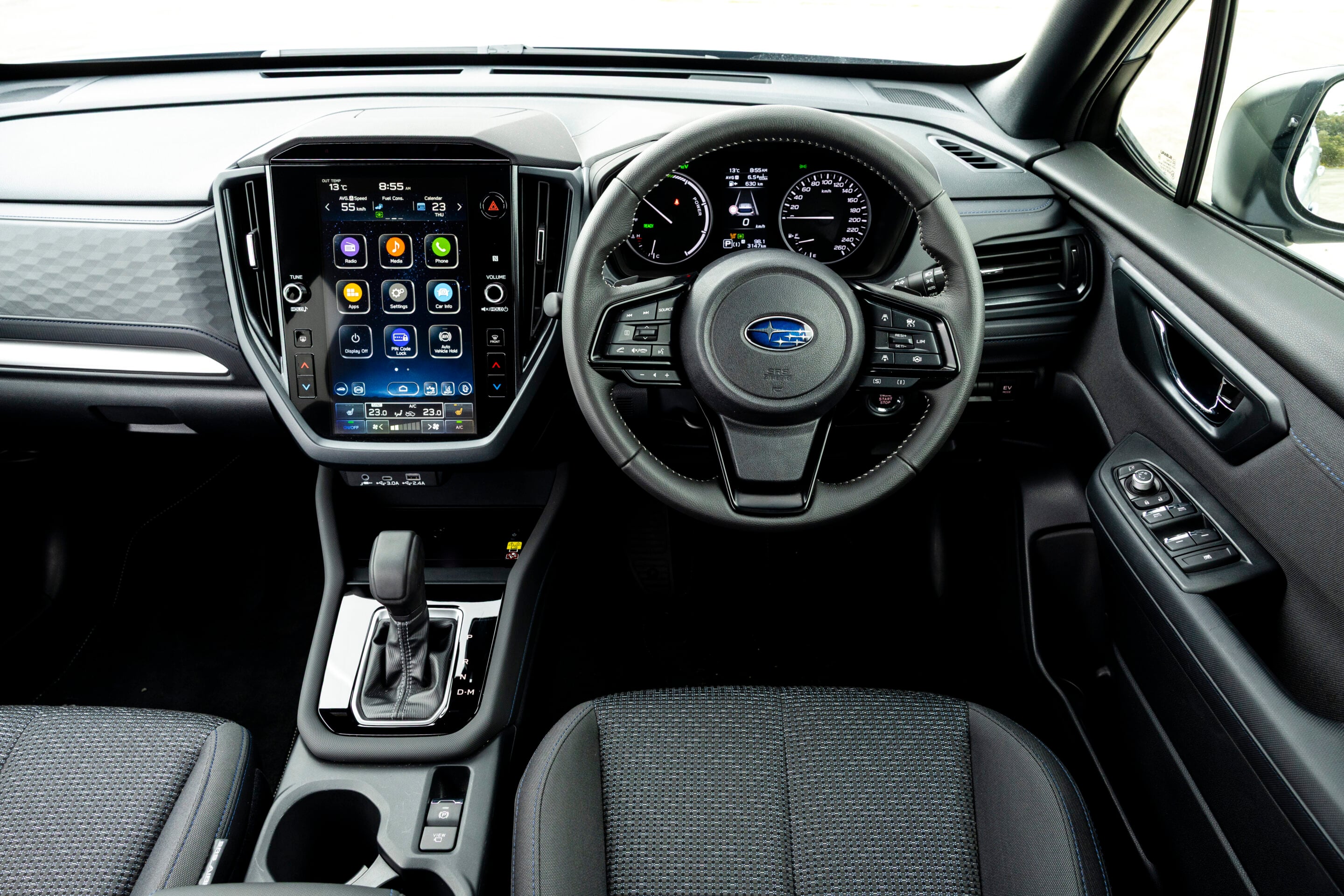
Inside, the Subaru is laid out in a conventional way apart from the 11.5-inch central screen that is mounted portrait rather than landscape. It’s nice to see there are at least some hard buttons for commonly used functions and the usual slew of USB charging points and cup-holders are present and accounted for.
The company says the front seats have been made more comfortable and even a short stint at the helm bears this out. Thankfully, the rear seat is roomy in every direction, too, with plenty of foot room and a cabin wide enough for actual rear-seat adults.
If this is all sounding like a triumph of considered moderation over risky flamboyance, so be it. But long after you’ve forgotten about the lack of fire-breathing pace or trendy tech, you’ll still be appreciating the grown-up result this $46,490 car represents.
That the Forester survived our first edit when so many of its mid-sized SUV brethren did not, proves the point that, even in a stove-hot market segment, sometimes, a generous serve of something competent and familiar is all you really want.
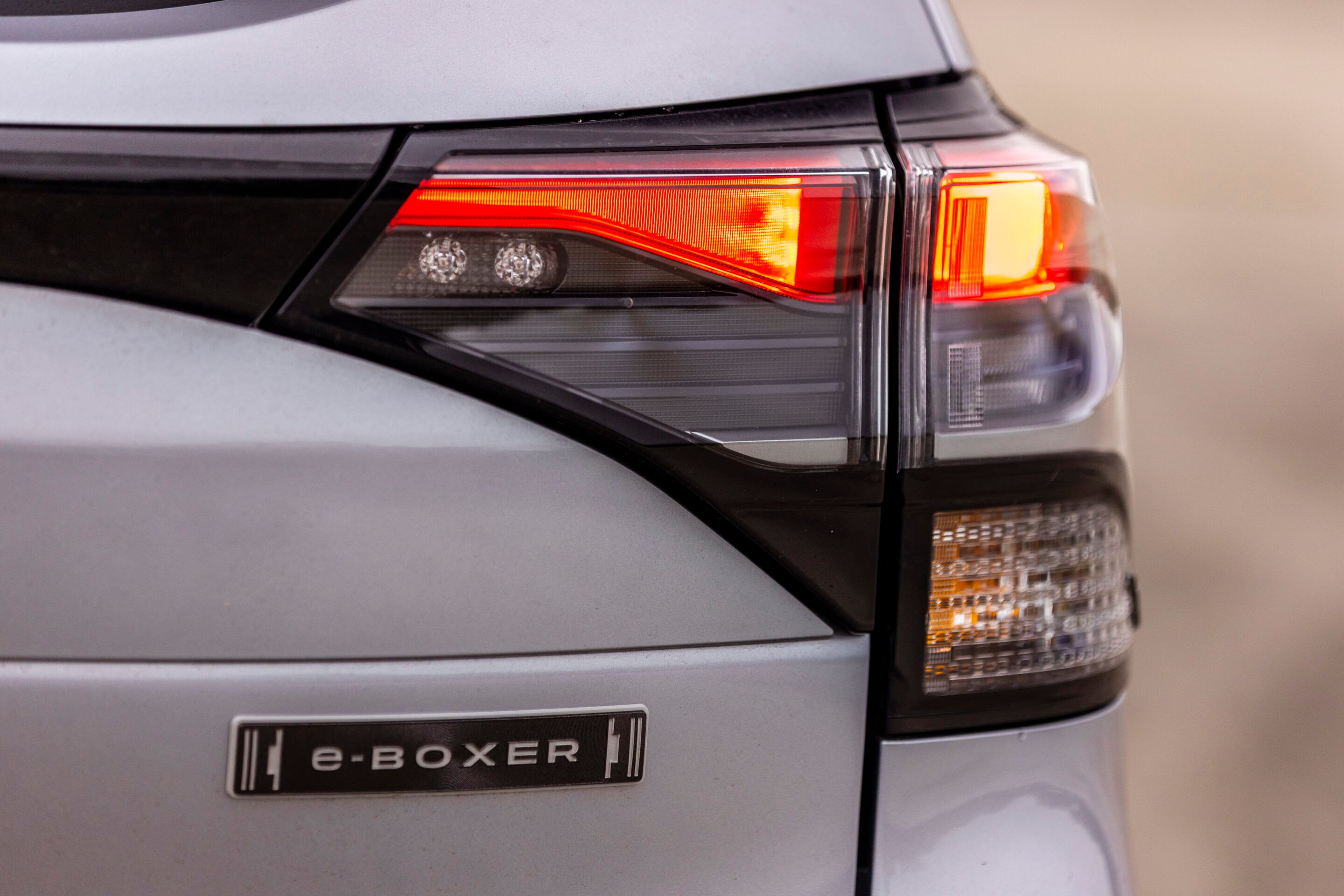
Specs
| Price | $46,490 (MSRP) |
|---|---|
| Body | Five-door, five-seat SUV |
| Drive | All-wheel drive (constant) |
| Drivetrain | 2.5-litre four-cylinder petrol hybrid |
| Power | 145kW combined |
| Torque | 276Nm combined |
| Transmission | Continuously variable automatic |
| Consumption | 6.2L/100km |
| Kerb weight | 1717kg |
| 0-100km/h | NA |
| L/W/H/W-B | 4655/1830/1730/2670mm |
| Boot space | 484L/1707L |
| Warranty | 5yr/unlimited km |
| Safety rating | 5 star ANCAP (2024) |
One of my favourite terms that we use a lot in testing is a simple one. “It’s the answer to a question nobody asked.”
The judging team visited that phrase more than once during COTY, and more than once when dissecting the merits of a four-wheeled conveyance devoid of a back window. It is, without doubt, one of the Polestar 4’s most glaring deficiencies. It doesn’t work in theory and it doesn’t work in practice.
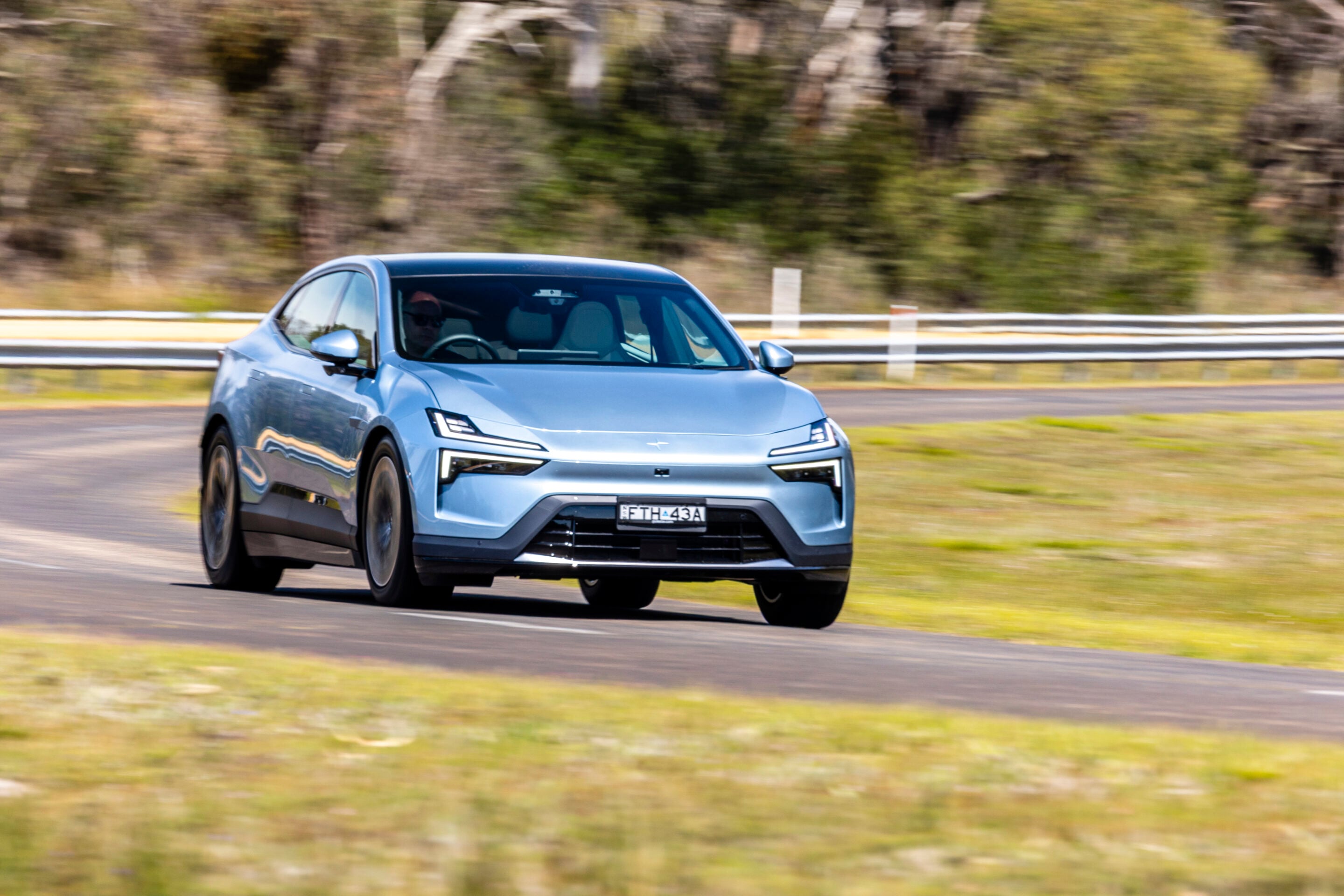
On the plus side, the Polestar 4 looks and feels well-made, and delivers premium cabin ambience, rough road thumps aside. On the move broadly, and on smoother surfaces, it’s a serene driving experience. The interior isn’t just thoughtfully appointed, it’s beautifully executed and stretches well beyond Tesla’s austerity. Front and second row space is a highlight for family buyers, along with a hefty 526L/1536L luggage capacity, and Polestar 4’s energy usage is solid in the real world if a little greedier than the standard-setting Tesla Model Y.
As tested though, the Long Range Single motor crests $90,000, with options getting very pricey, very quickly. The judges agreed that too many crucial functions require navigation through the central infotainment touchscreen, and that the rear window delete is a case of the design team running roughshod over engineering. If you spend a lot of time on rutted rural roads, the firm ride will also grate, but around town it will behave well.
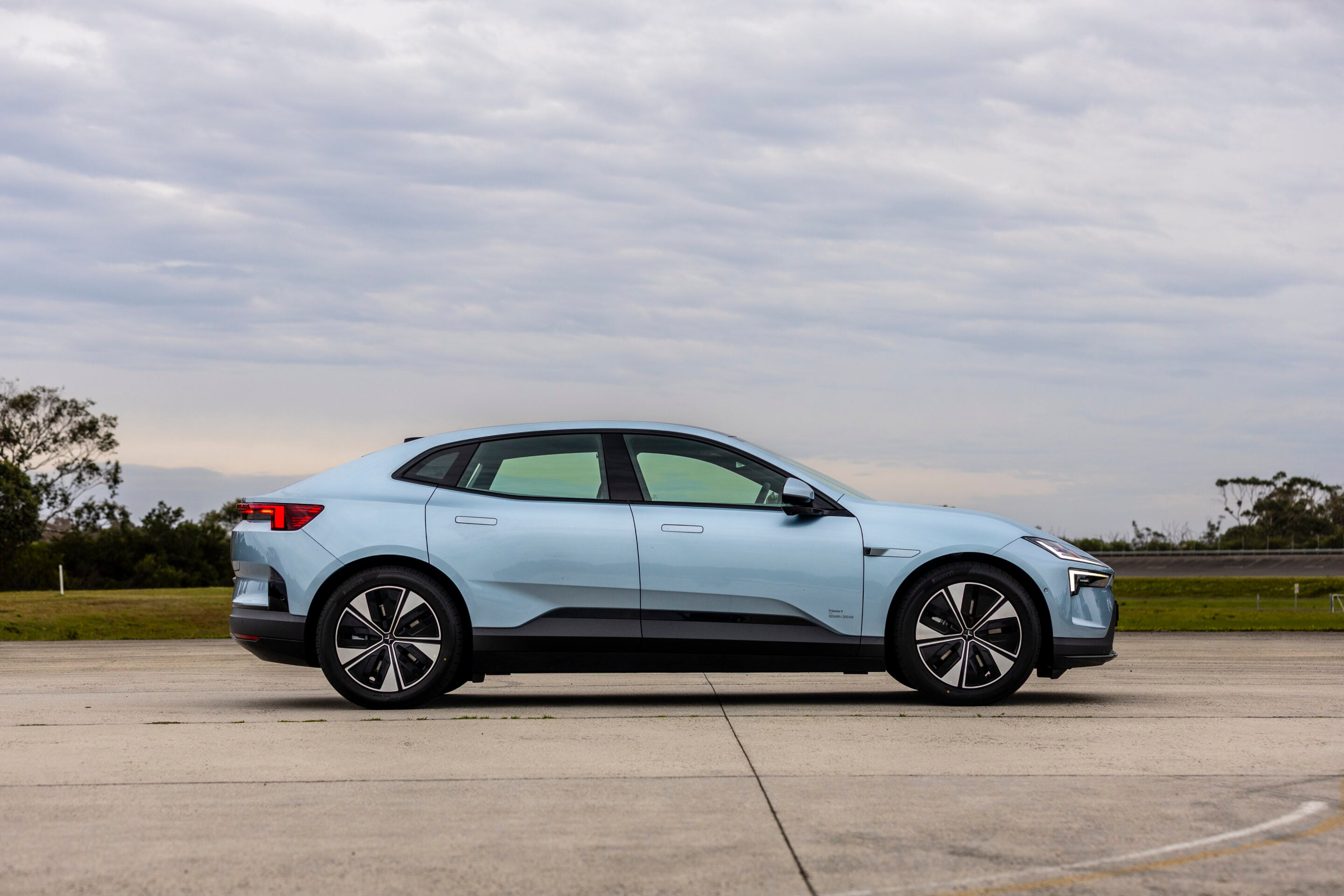
Like all electric cars, the Polestar 4 feels fast, the 7.1-second run to 100km/h backing that up, even if this single motor model is the slower of the two. Interestingly, Polestar has accounted for the pace with quality Pirelli P Zero rubber, a performance-oriented choice, without question. The 100kWh battery is hefty, and the single motor makes an easy 200kW and 343Nm. The kerb weight of 2230kg means it’s a portly vehicle to fire through a ride and handling course, and the weight is never far from the mind of the person holding the steering wheel.
Electric vehicles are heading rapidly toward a fork in the road. Do manufacturers continue to try to innovate and reshape the rule book in the way that Polestar has done by deleting the rear window? Or do they deliver on the time-honoured tradition of the motor car? That is, give ’em what they want. If Polestar had delivered a car that was more conventional, for example, the judges thought that it would go into battle with more firepower in its armoury.
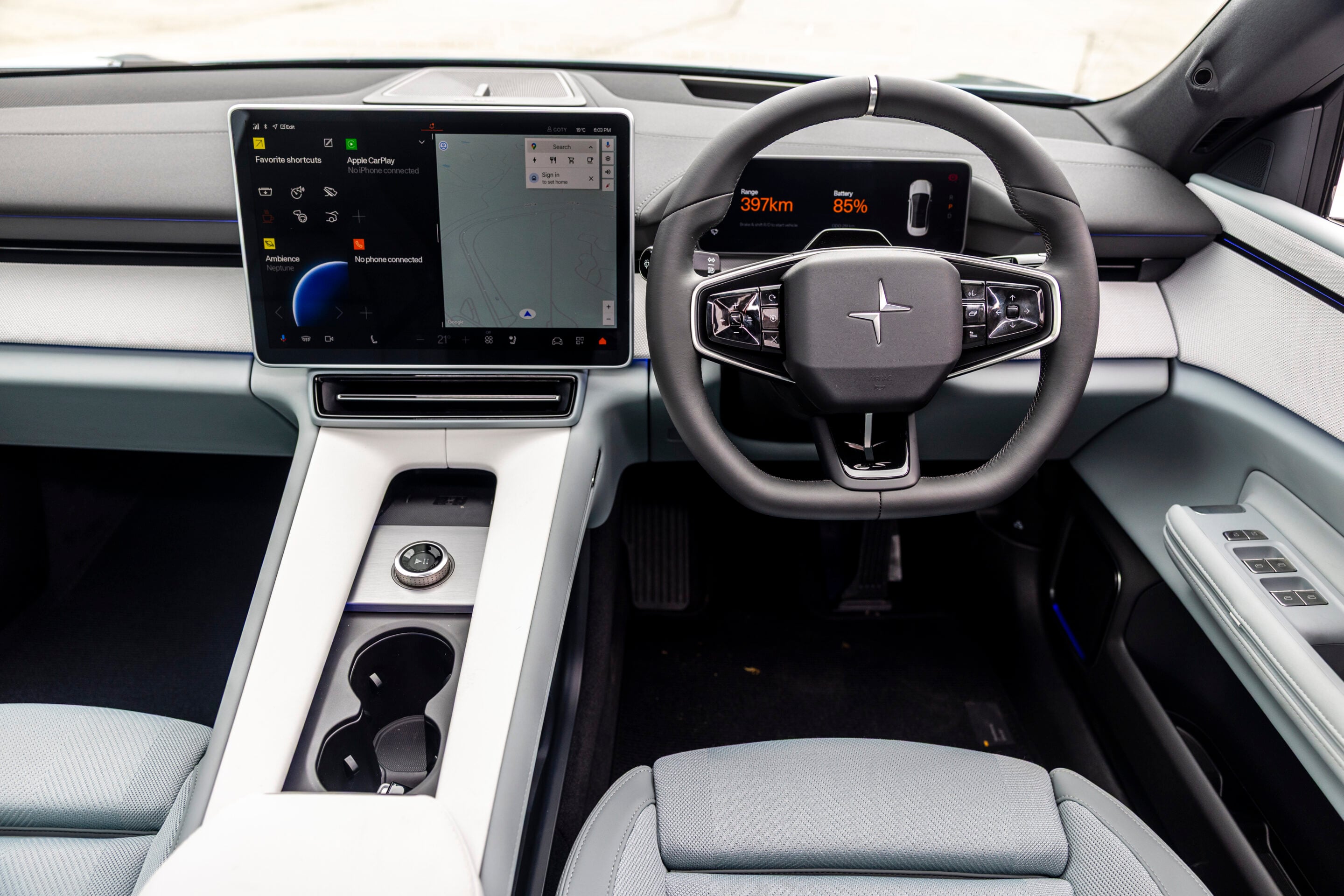
While there’s a lot to like about the Polestar 4, then – both on paper and in the metal – this year’s field is a tough one, and Polestar’s attempt to rewrite the rules for the segment, haven’t quite hit the mark. Still an excellent vehicle both in the pure sense and as an EV, it’s not as
competent as the best in the field for this year’s award.
Specs
| Price | $78,500 (MSRP); as tested, $89,650 (MSRP) |
|---|---|
| Body | Five-door, five-seat coupe |
| Drive | Rear-wheel drive |
| Drivetrain | Single electric motor, 100kWh lithium-ion battery |
| Power | 200kW |
| Torque | 343Nm |
| Transmission | Single-speed reduction gear |
| Consumption | 17.8-18.4kWh/100km, 620km range WLTP |
| Kerb weight | 2230kg |
| 0-100km/h | 7.1 sec |
| L/W/H/W-B | 4840/2067/1534/2999mm |
| Boot space | 526L/1536L (15L front) |
| Warranty | 5yr/unlimited km |
| Safety rating | 5 star ANCAP (2025) |
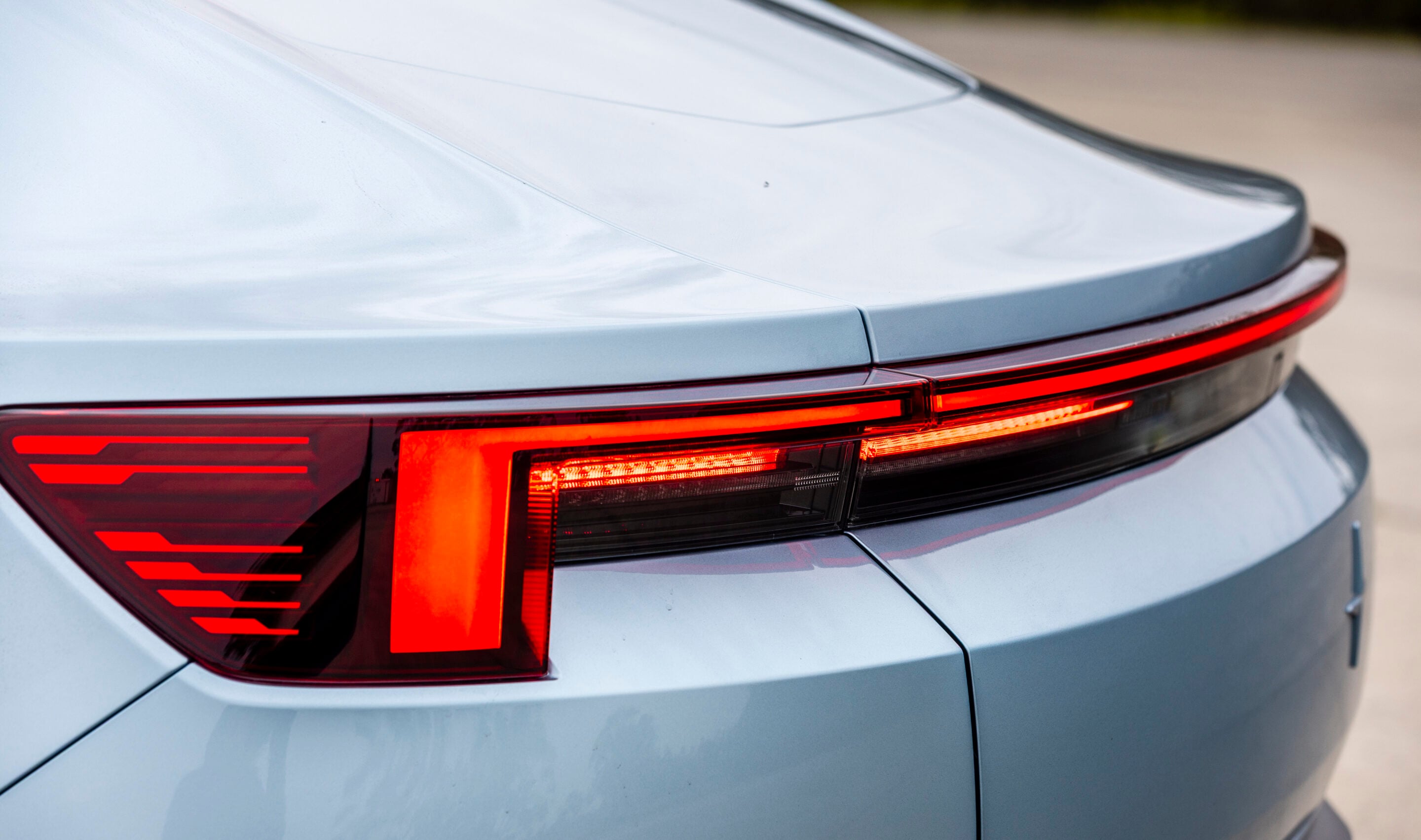
On paper, the Nissan Ariya was looking good.
It ticked the first, most important box for any new EV, with a claimed range just over 500 kilometres. The starting price of $55,840 was not high and not low, but not out of step with rivals arriving from outside China. Also, it’s not just another big-box SUV, as Nissan has injected some angles and originality in its exterior design. Inside, there was plenty of space and an airy look and feel.
Going back to basics, the Ariya – a name variously attributed as ‘noble’ and ‘celebration’ – is a mid-sized SUV when most Australian families are shopping for something in that space and a growing number are being converted by EV contenders from brands as diverse as MG and MINI, Kia and Hyundai, and – inevitably – Tesla.
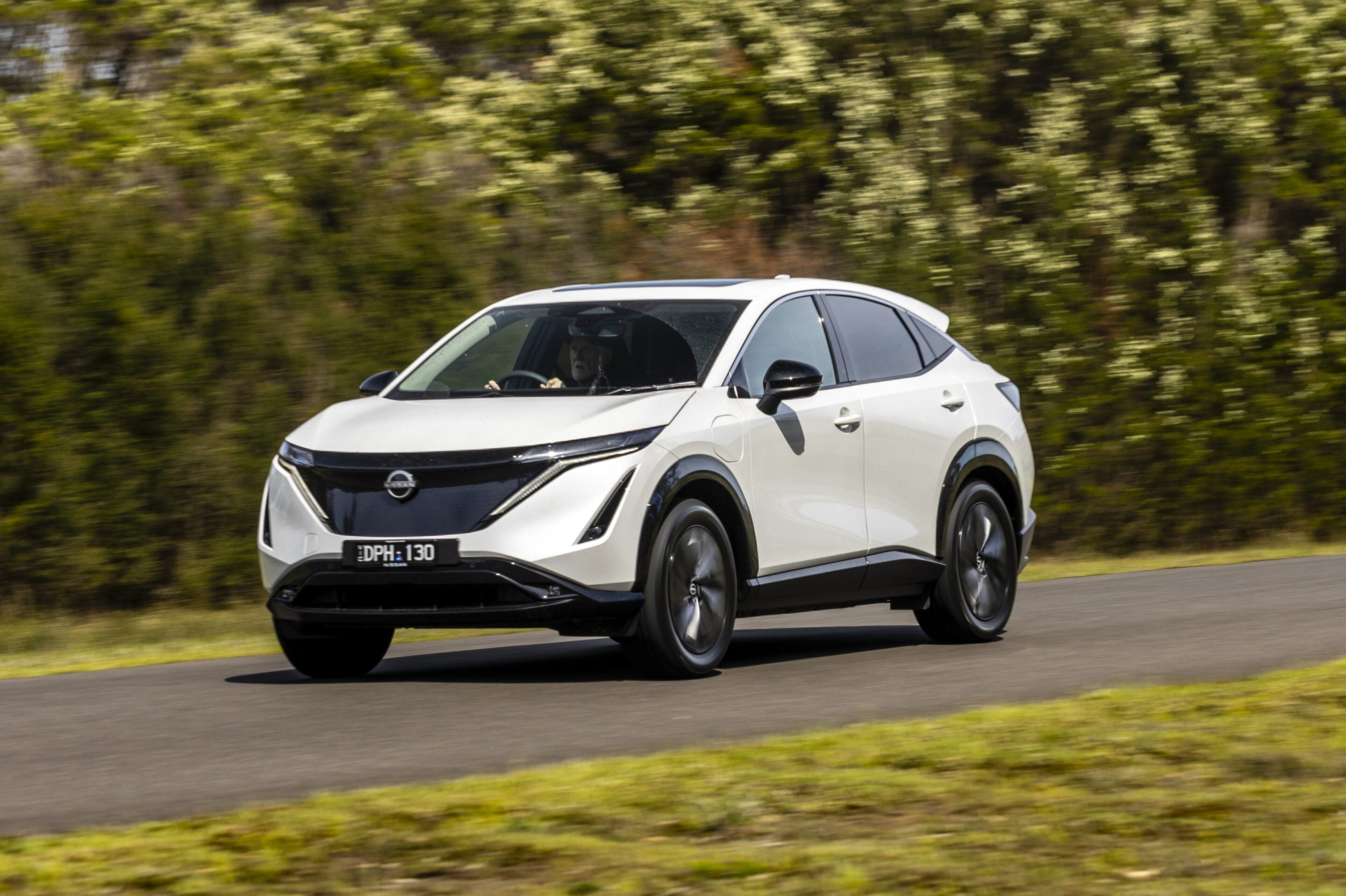
Why, then, is it struggling so miserably for sales in Australia? Just 47 were registered in September, a total easily eclipsed by the vastly underwhelming Leapmotor C10 with 71. Digging into the background on the Ariya began to provide answers.
It is Nissan’s second fully battery-electric contender, after the Leaf, but it was unveiled as a concept car in Tokyo nearly six years before reaching Australia. That is literally a generational gap when Chinese brands are bounding ahead, handing a massive advantage to its rivals.
Nissan Australia claimed the delay was a conscious decision to set its timing to match the introduction of the Federal Government’s New Vehicle Efficiency Standard, with its requirement for more EVs to offset its diesel and petrol combustion contenders. But, really…
The Leaf has never done much in Australia, even in its second generation, so the package for the Ariya is a smarter move. There are single and dual-motor power packs, 63 or 87kWh batteries, with either front or all-wheel drive, and the COTY contender was the Advance+ model.
The Advance+ sits in the sweet spot and means $63,840, 178kW/300Nm, front-wheel drive and a 0-100 time of 8.1 seconds.
A walk-around on the Ariya showed its size and heft, good exterior finishing, and the vast leap forward from the Leaf. Inside, there was lots of space, but now there were questions. There is hard plastic, the design is overly frugal, the seats are roomy but not supportive, and the dashboard layout and display screens are just ‘me too’ in the class. There was a sliding centre console, with a gimmicky electric motor, but otherwise nothing special on the USB or storage front.
“It looks cheap,” opined Peter Robinson.
“Nothing much to see here,” said David Morley.
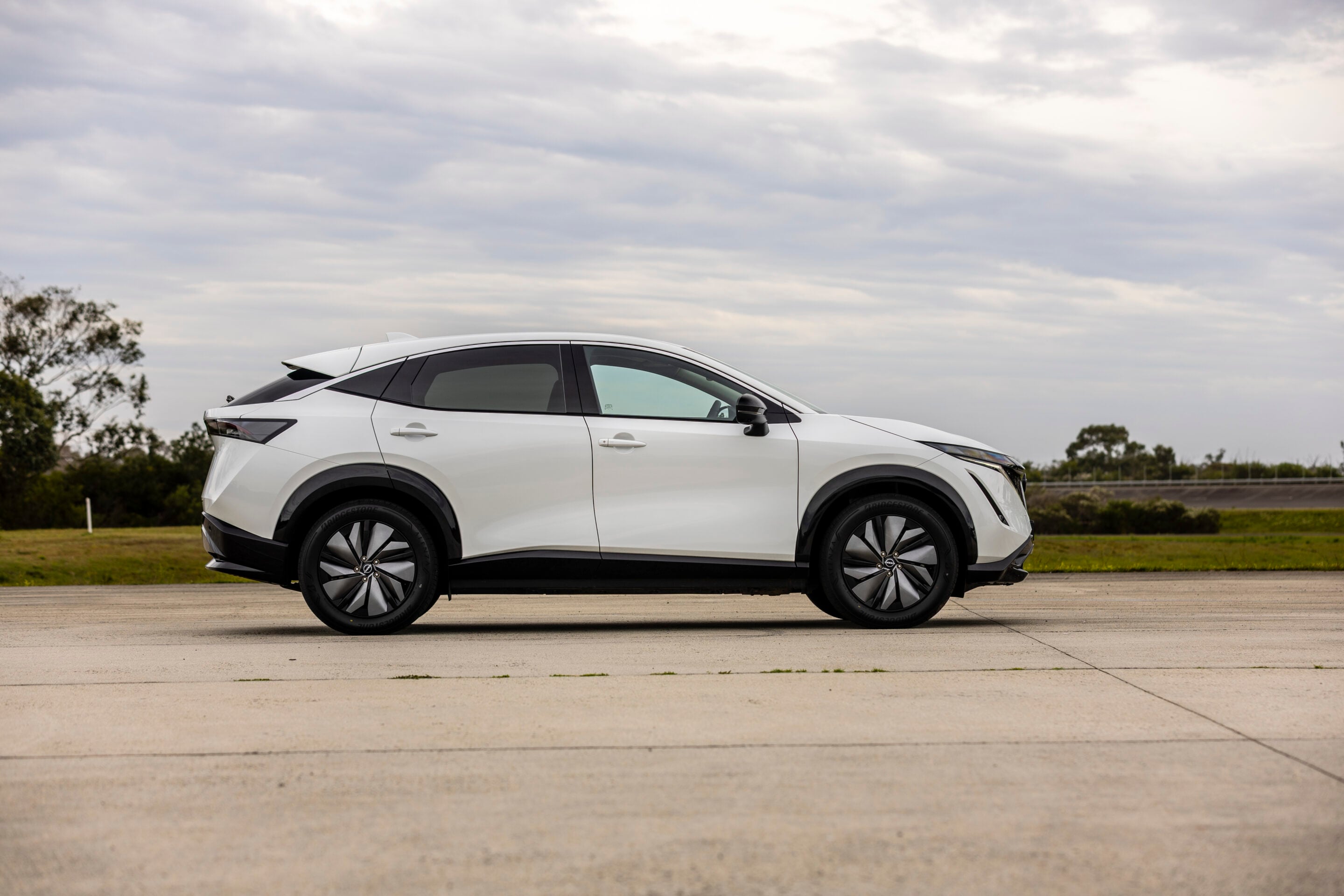
In the driving, the Nissan was underwhelming. For an EV, the acceleration was ordinary. Nissan touts its one-pedal driving mode, with strong regeneration to boost the battery and improve slowing without the brakes, but that’s not unique.
The steering was light and floppy, with response which is probably just fine on a California freeway but gave no real connection to the road.
At Lang Lang, it had to be eased into corners and squeezed under braking. It rocked and rolled. Bounced, too. The damping was soft and floppy, especially on the rolling waves set to highlight such flaws.
Road noise? More than other EVs in the COTY field. In the end, no-one came to save the Ariya when it was the first car dropped from COTY.
“Where was this car four years ago?” asked Robinson.
“Where was this car 10 years ago?” replied Morley.
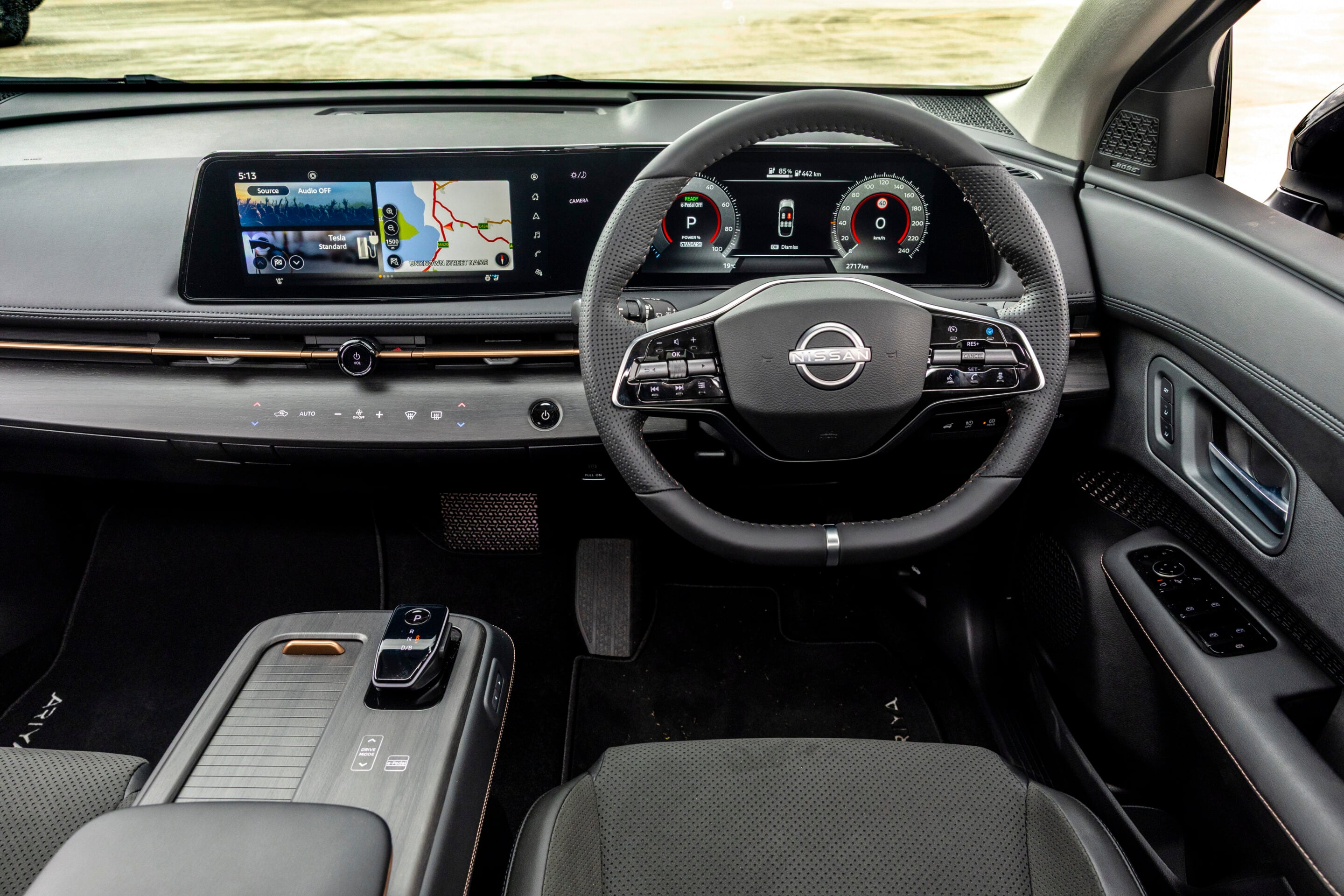
Specs
| Price | $63,840 (MSRP) |
|---|---|
| Body | Five-door, five-seat SUV |
| Drive | Front-wheel drive |
| Drivetrain | Single electric motor, 87kWh lithium-ion battery |
| Power | 178kW |
| Torque | 300Nm |
| Transmission | Single-speed reduction gear |
| Consumption | 19.1kWh/100km, |
| 504km range | (WLTP) |
| Kerb weight | 2078kg |
| 0-100km/h | 8.1 sec |
| L/W/H/W-B | 4595/1850/1660/2775mm |
| Boot space | 446L/1350L |
| Warranty | 5yr/unlimited km (min), 10yr/300,000km (conditional) |
| Safety rating | 5 star ANCAP (2022) |
